Bolivia, Part 4: Hot and Dusty across the Pampas
— Bolivia, South America — 6 min read
August 9 - 13, 2010
After being stuck in Rurrenabaque, in northern Bolivia, for a few days waiting on petrol, the ride was on again. North to Brazil.
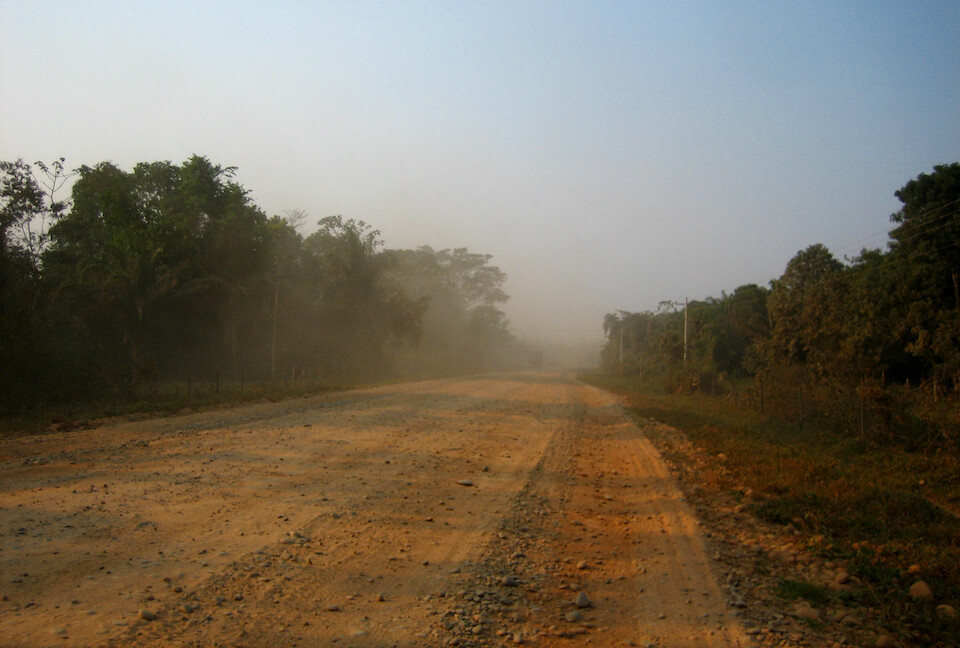
Eager to get back on the trail, I left Rurrenabaque around 3pm after getting petrol and packing up.
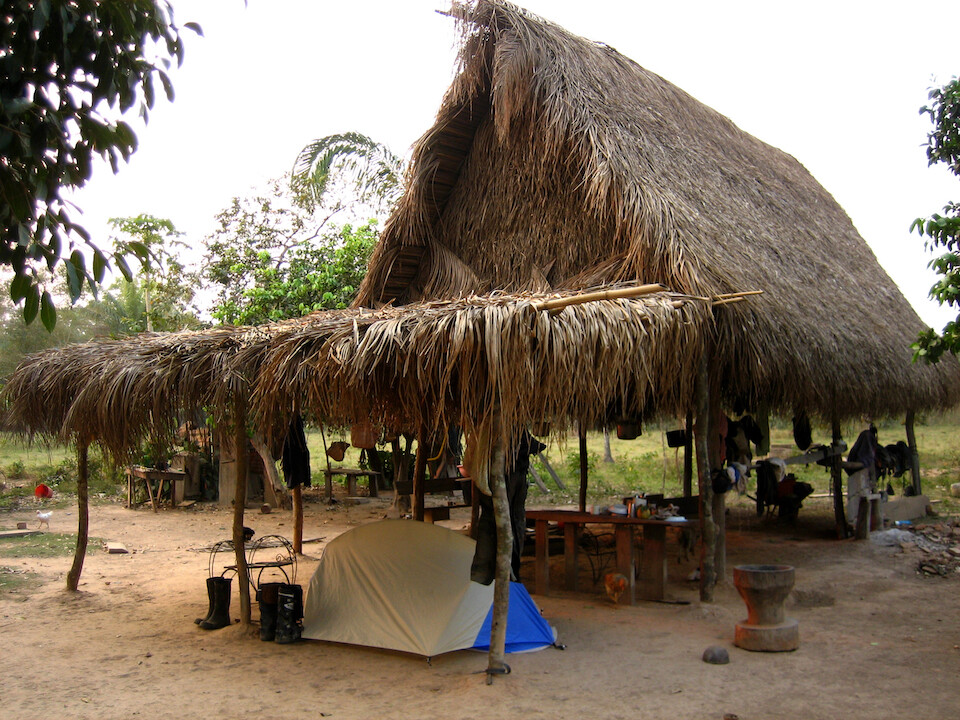
I didn't make it far before deciding to find a place to stay for the night. I came across this small farm and asked them if I could camp for the night.
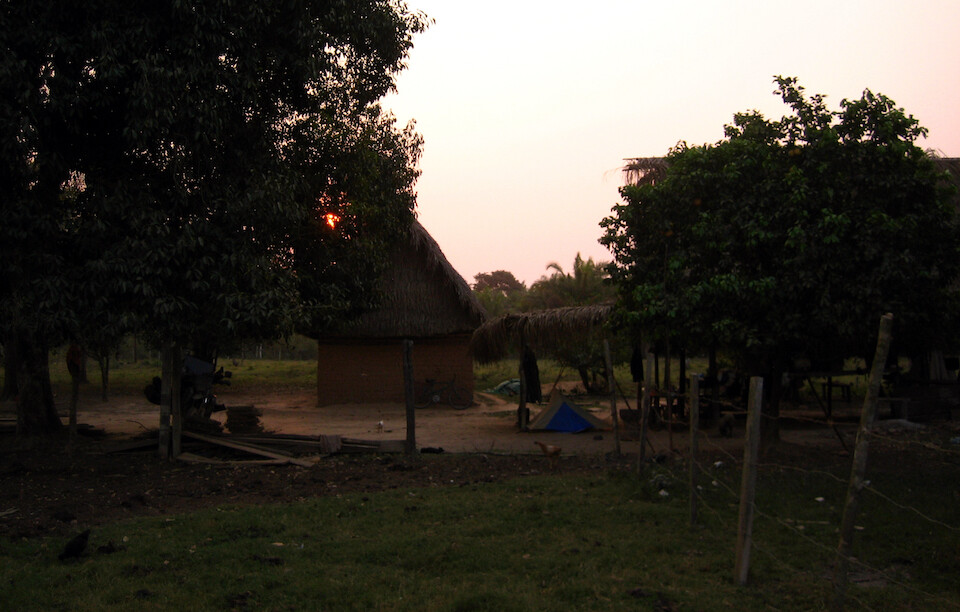
It was a good ways away from the road and the dust and it felt quite tranquil.
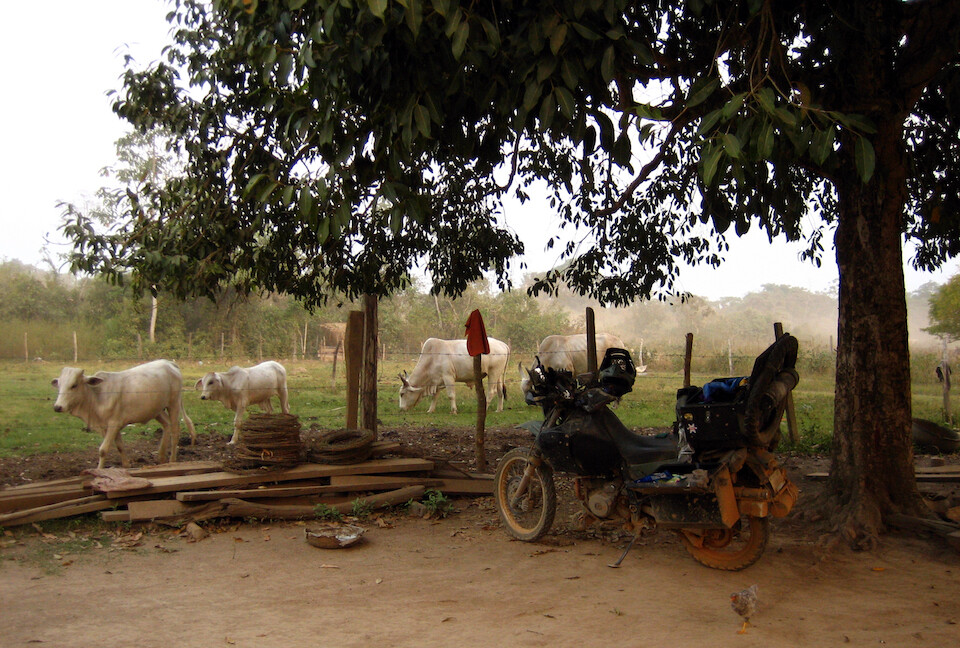
They were herding cattle and sheep.
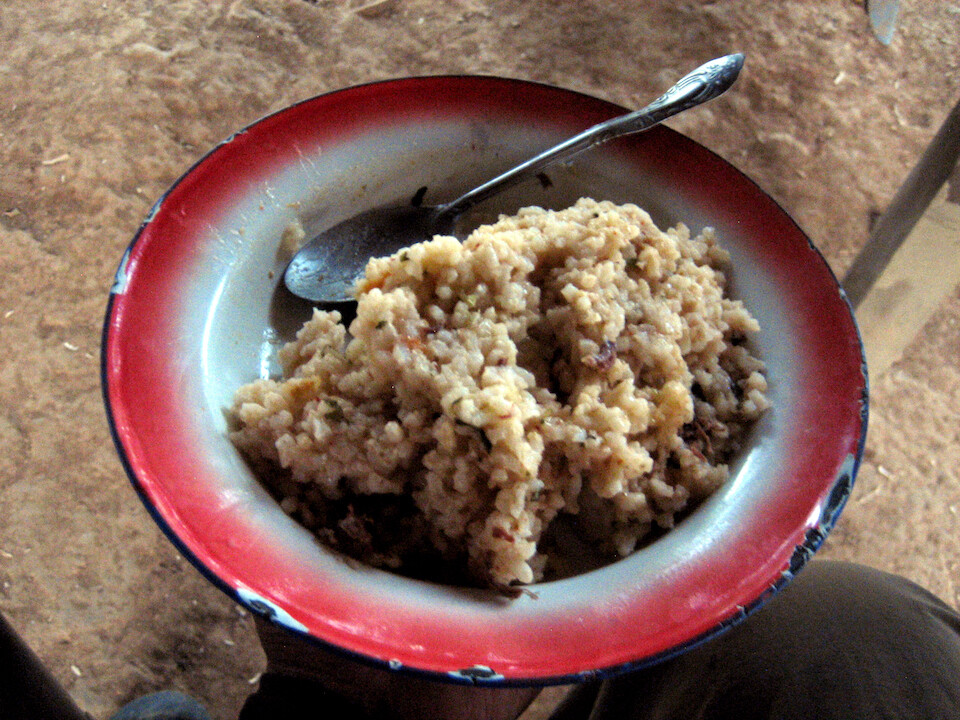
As I set about preparing dinner with my stove, they offered me a plate of food: rice with some eggs. Very generous of them.
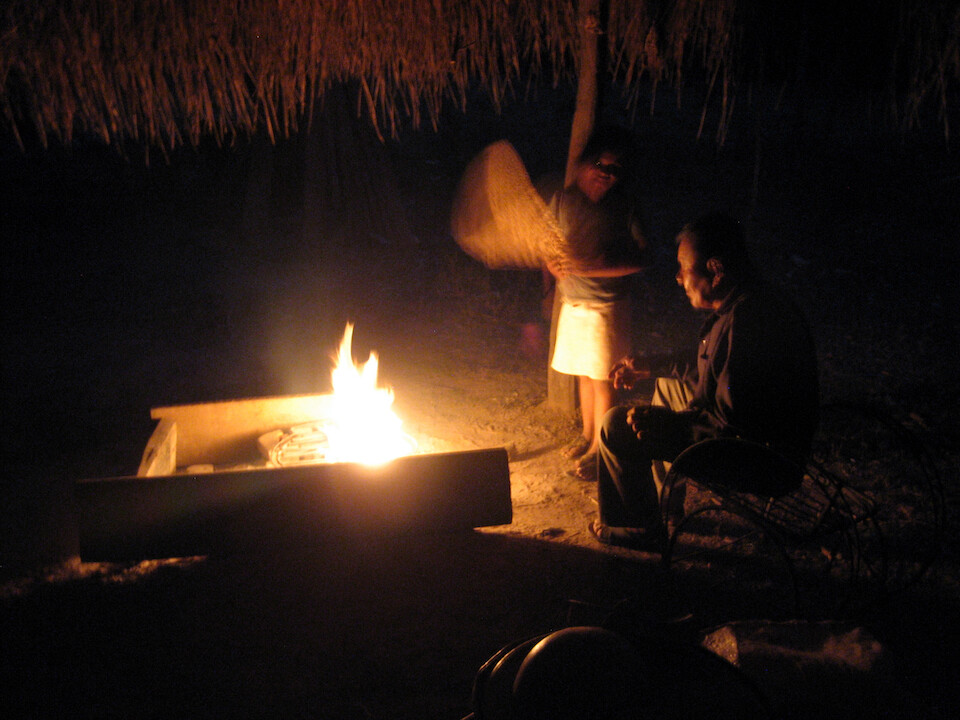
In the evening, as darkness fell, the old man sat by the fire and their young child fanned the flames.
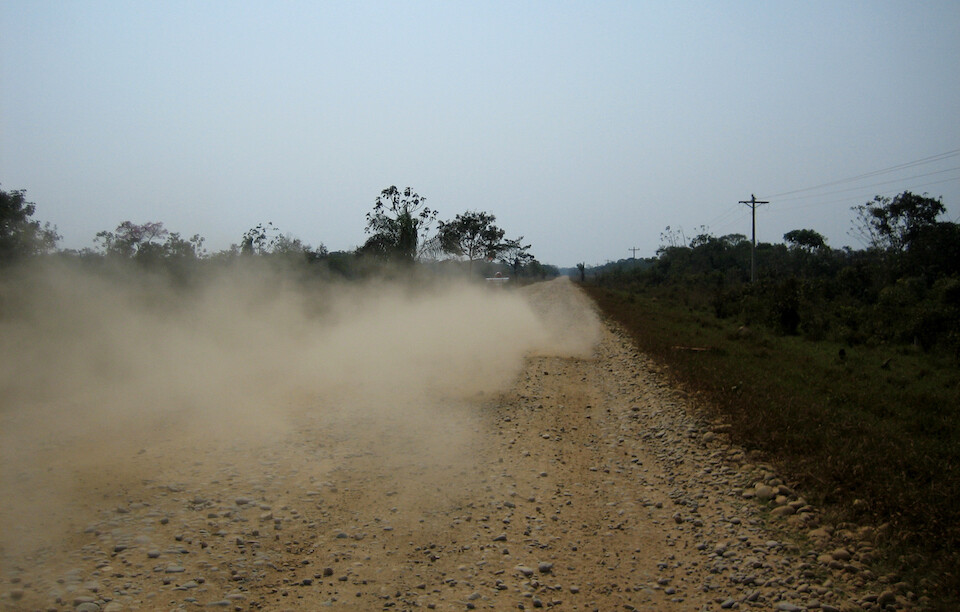
The next morning, back on the pebble-riddled sandy track. It was going to be hot and dusty for the next 550 kms to Riberalta, the next major town.
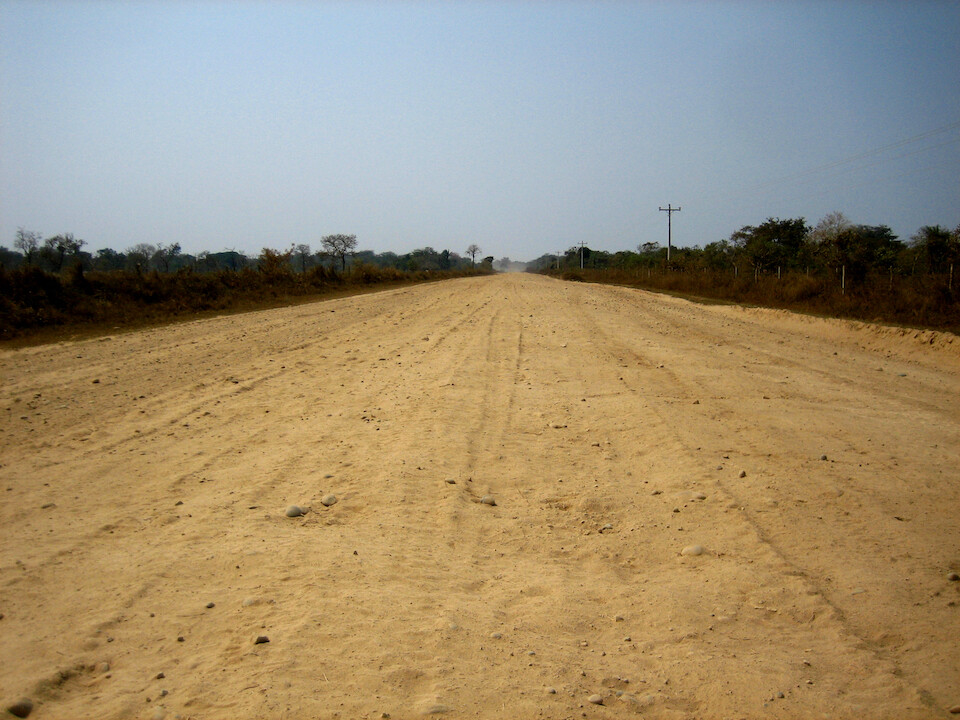
The surface was pummeled into soft sand in places and riding through wasn't that bad actually. The only downside was oncoming traffic with trucks barreling by with a huge wake of dust in the air, causing zero visibility for a few seconds. Good thing there was a breeze blowing most of the time to clear the road of the dust clouds.
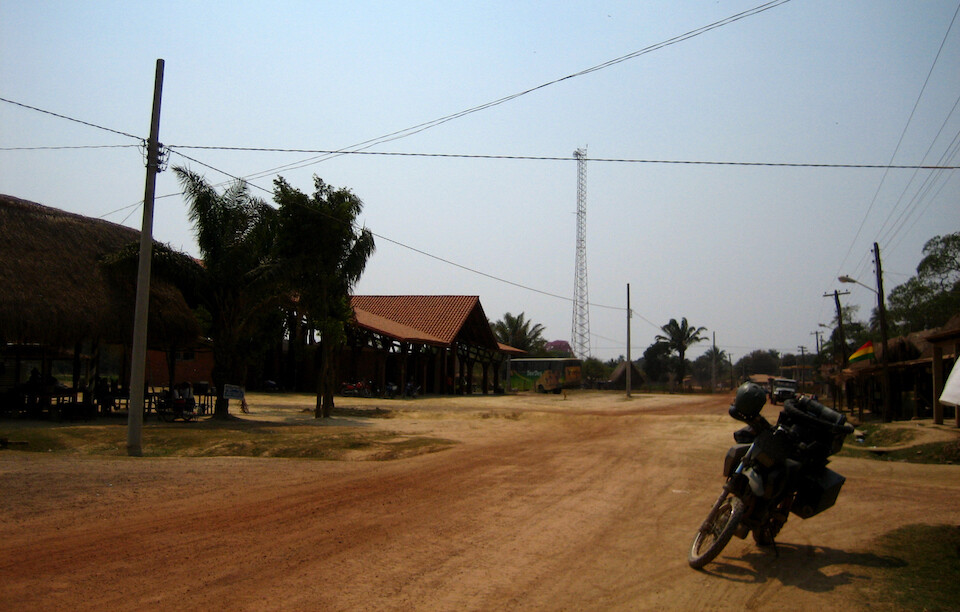
Picking up some bananas in Santa Rosa, a reasonably-sized town about 97 kms (60 mi) from Rurre.

To avoid the bone-rattling rocks, I followed a path on the side of the road in some places.
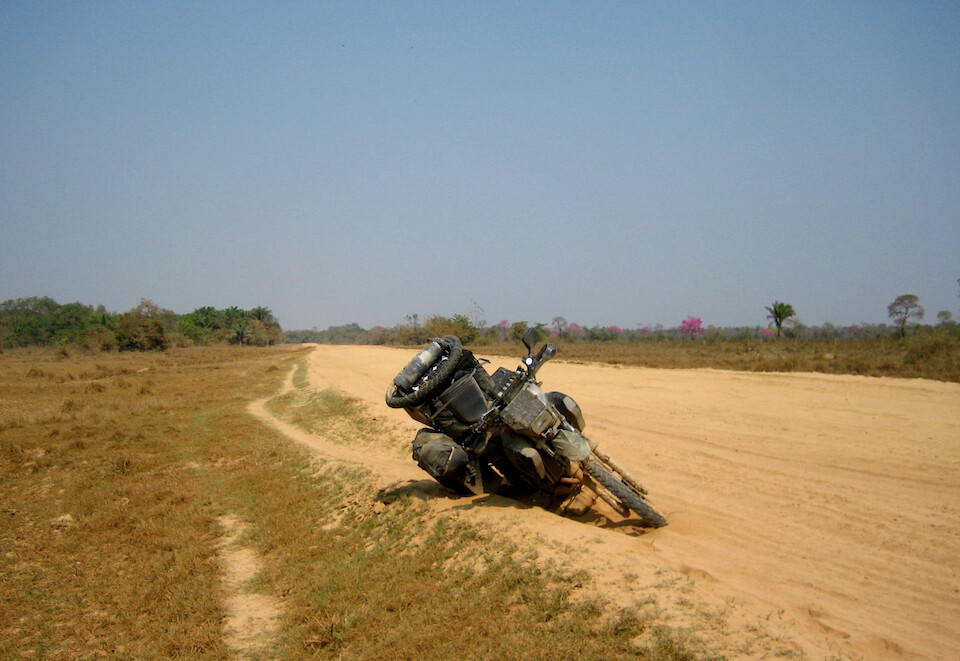
Oops. As I was coming back to the main piste from a side track, the heavy sand caught my front wheel and laid the bike down gently, with the pannier resting against the small embankment.
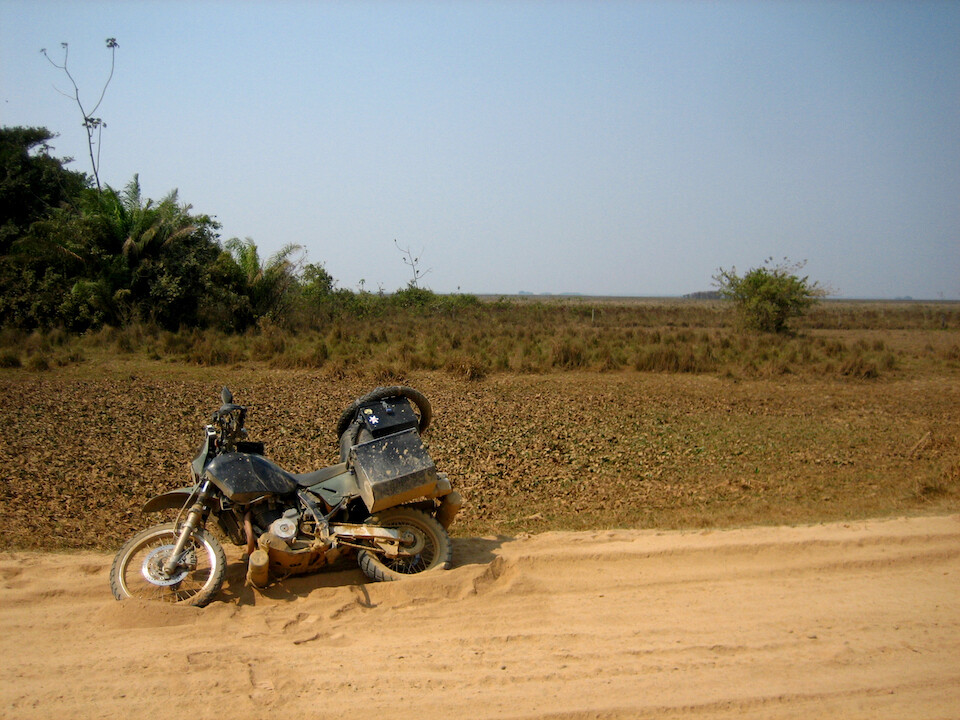
It was quite a struggle to wake up sanDRina from her nap and the loose sand not helping.
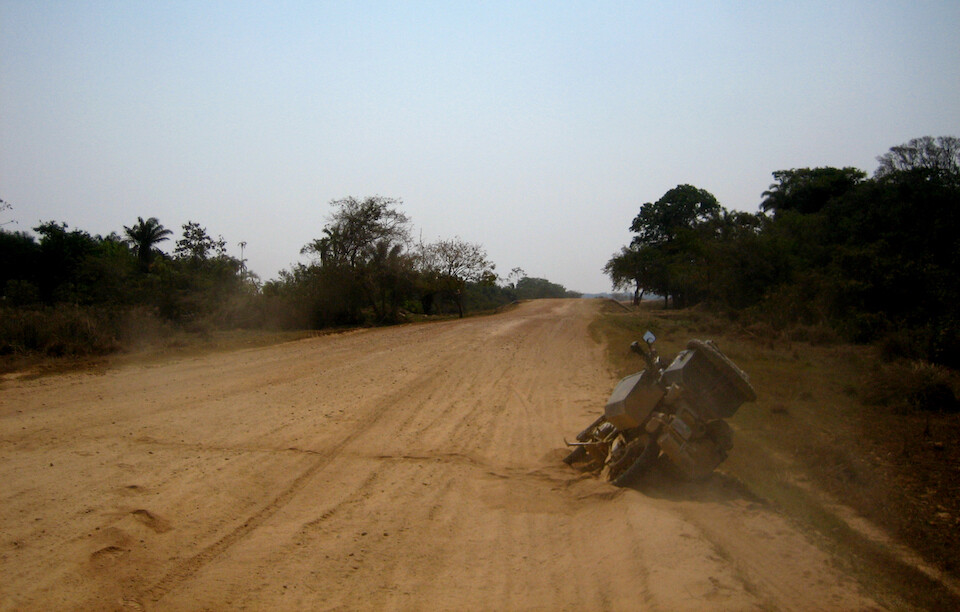
I waited about 15 minutes and a local biker came by who helped me get sanDRina right side up. If no one would have come in 20 minutes or more, I was going to start removing the panniers and lightening the bike, but didn't really want to do that in these conditions.
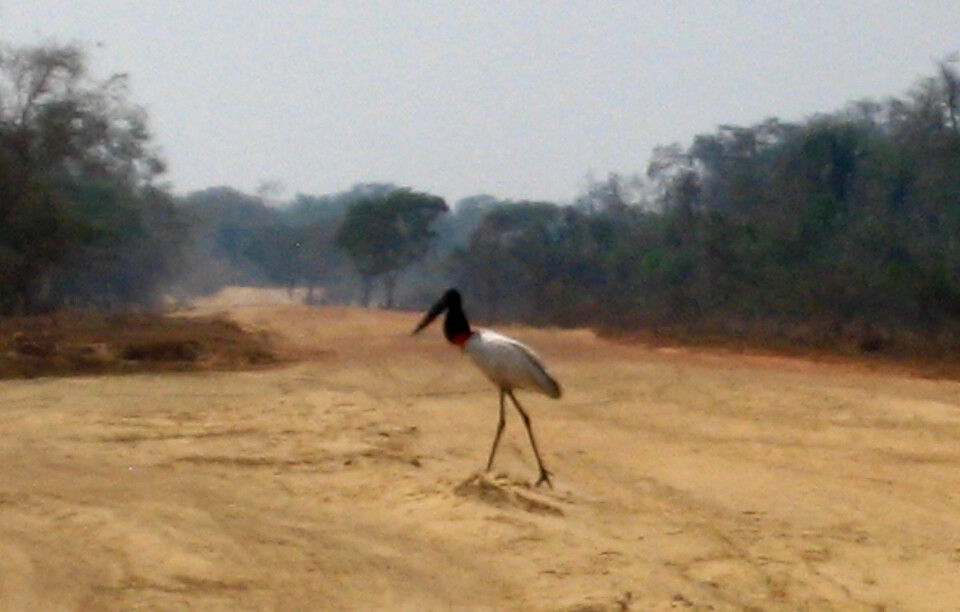
Wow, now that's a tall bird. This is a Jabiru and it's the tallest flying bird in Latin America, standing as tall as 1.5 m (5 ft). As I got near, it was an impressive sight to see this guy take flight.
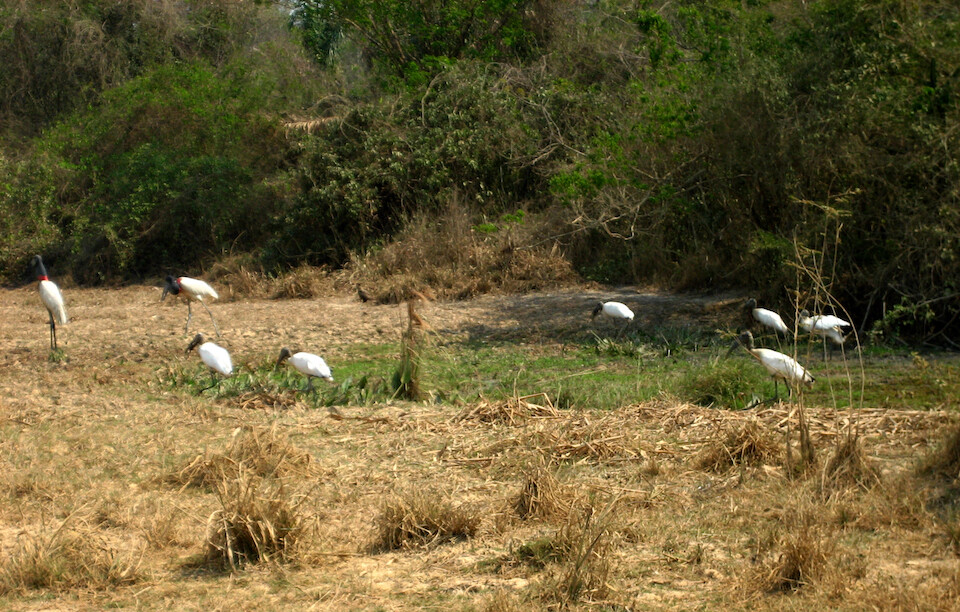
A group of jabirus around a pond in the Bolivian savanna.
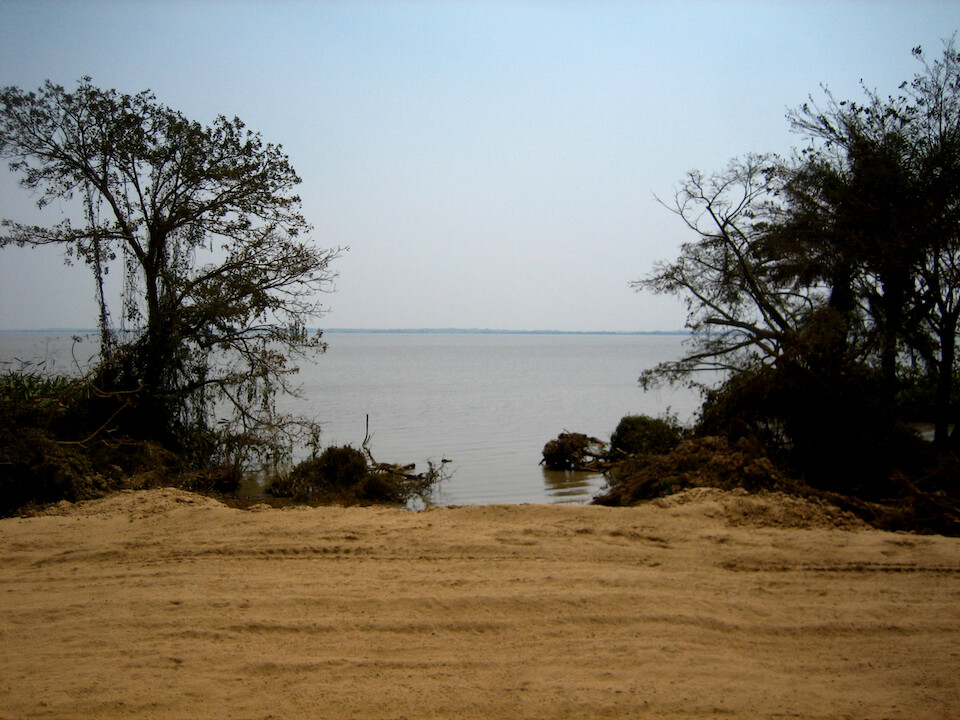
A welcome sight of water in this dry, hot region.
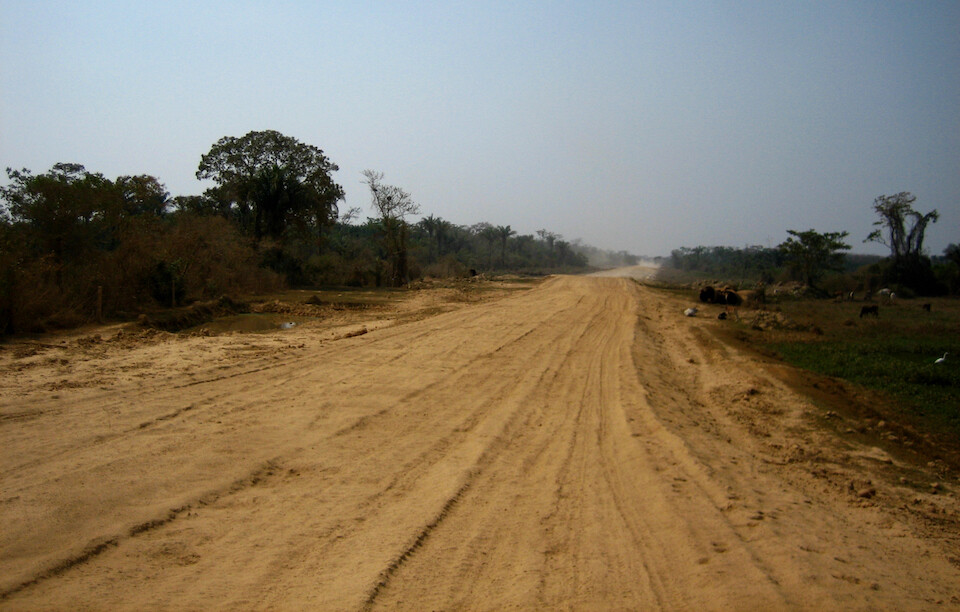
The lose sand made for slow going but I was ratcheting up my sand riding experience as the day wore on.
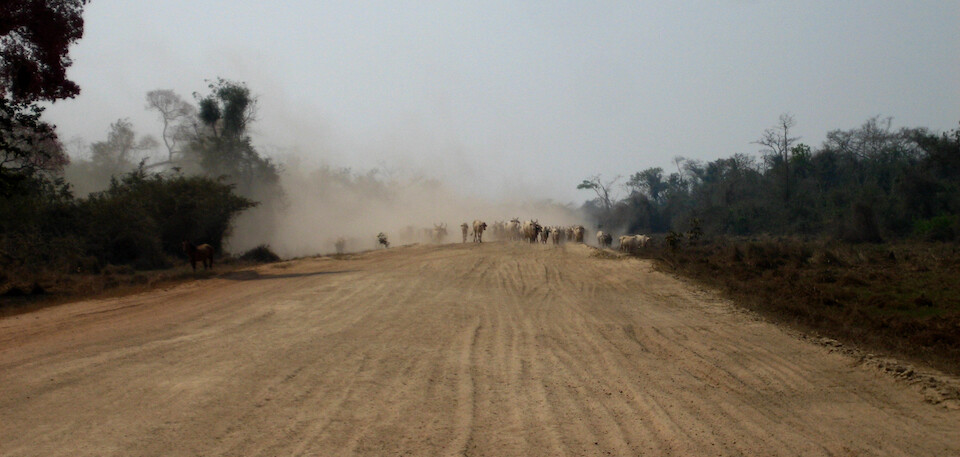
A dust cloud was moving towards me and instead of the usual truck, it was a herd of cattle.
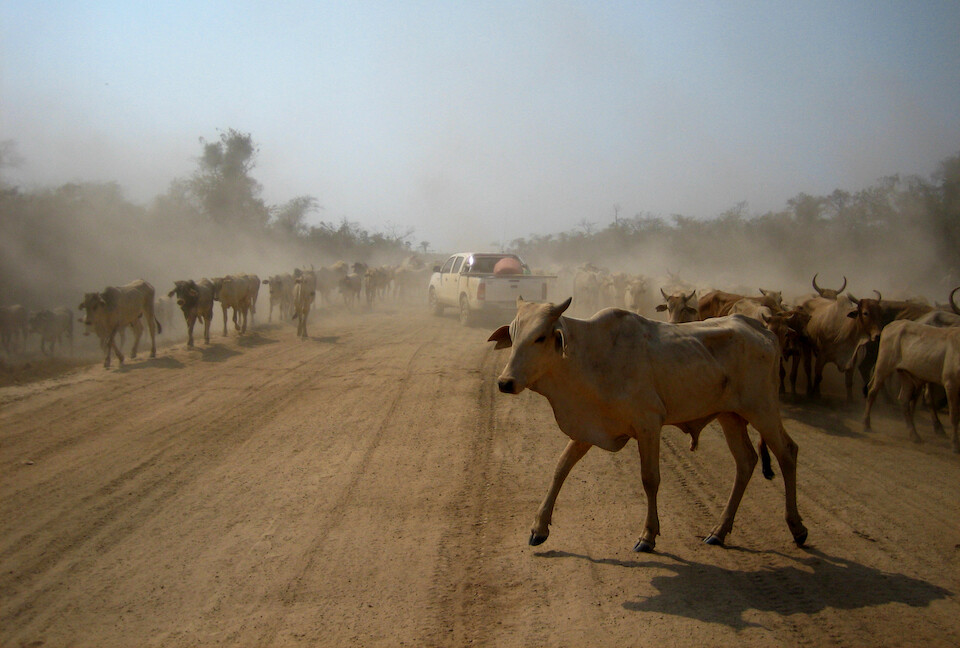
I got enveloped in them but the cowboys cleared a path for me.
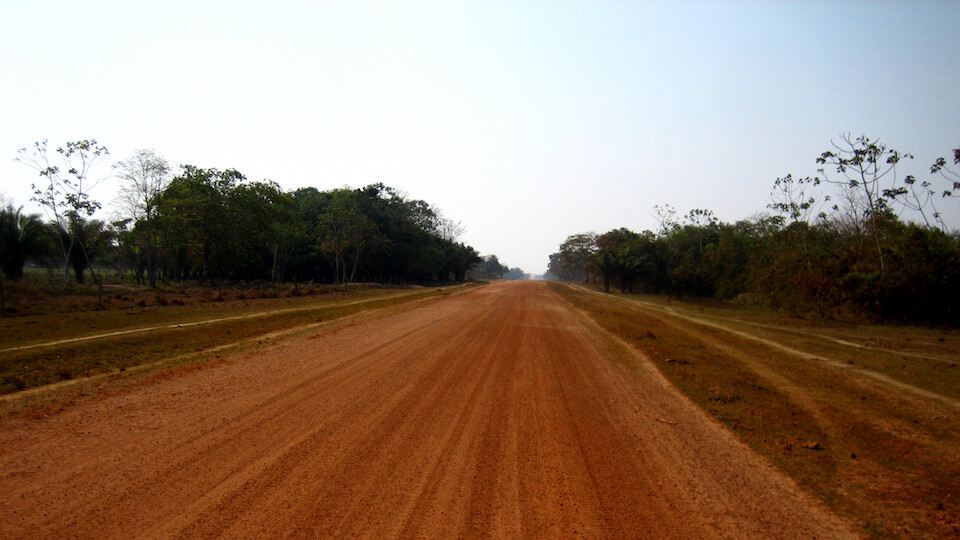
The road condition changed later in the day to a smoother, harder surface allowing me to taste third gear after a long time.
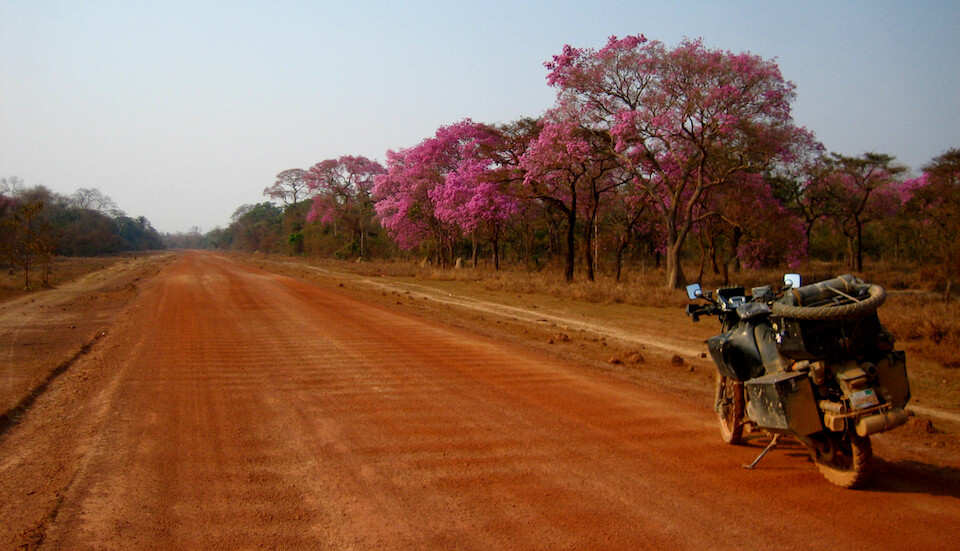
The first sign of natural bright color in a while and the harder surface quickly lead to wash board, a phenomena of undulations that form from the vibrations of heavier traffic as they speed across dirt roads. If everyone would go slower, there'd be less washboarding.
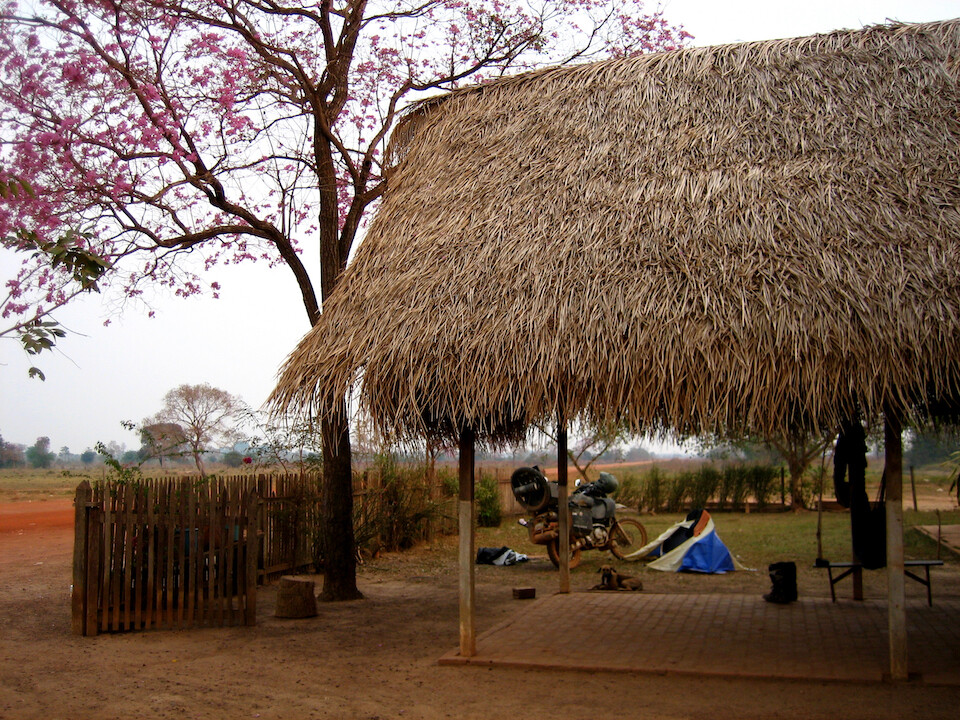
Around 4 pm, I came across this farm and asked them if I could camp for the night, which wasn't a problem.
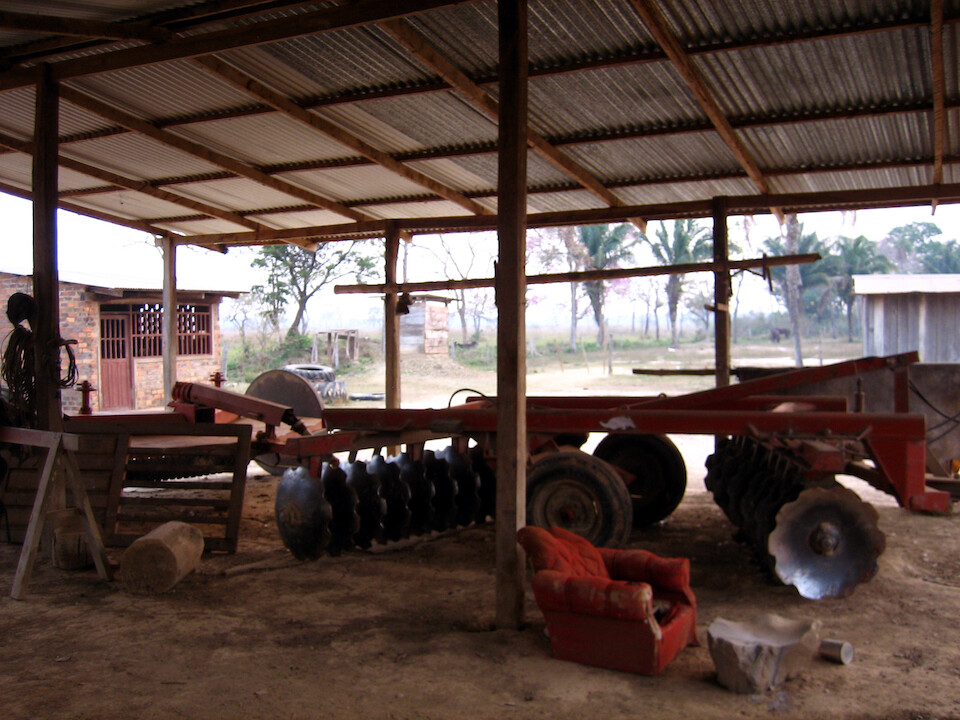
It was quite a big farm with lots of mechanization and they were also herding cattle.
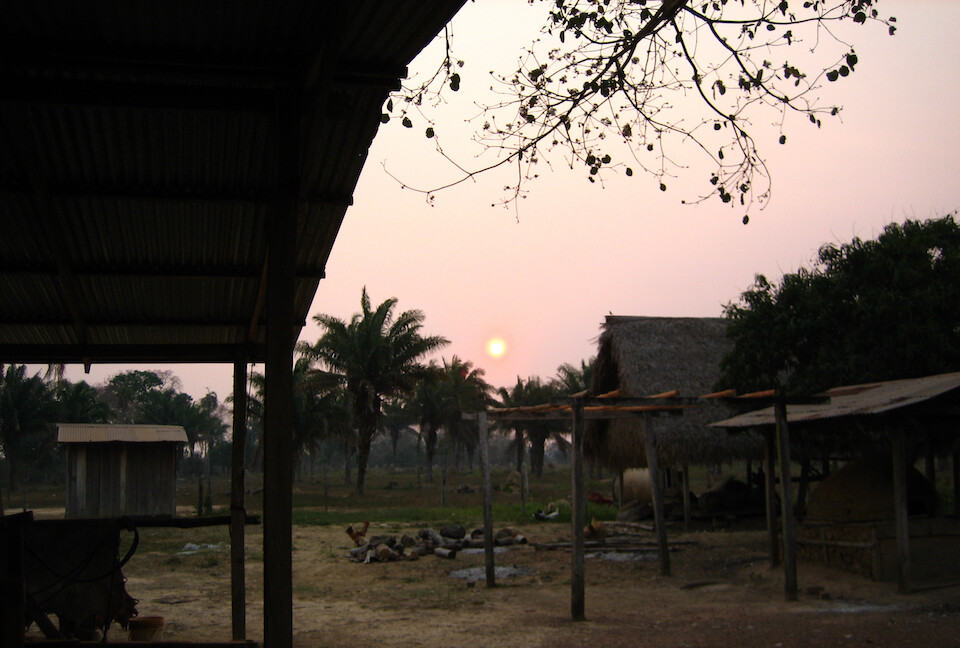
Strange sunset in the pampas. The strength of the Sun started fading around 4 pm but dusk lasted till about 7 pm. The outline of the Sun was clearly visible all through dusk until it went under the horizon.
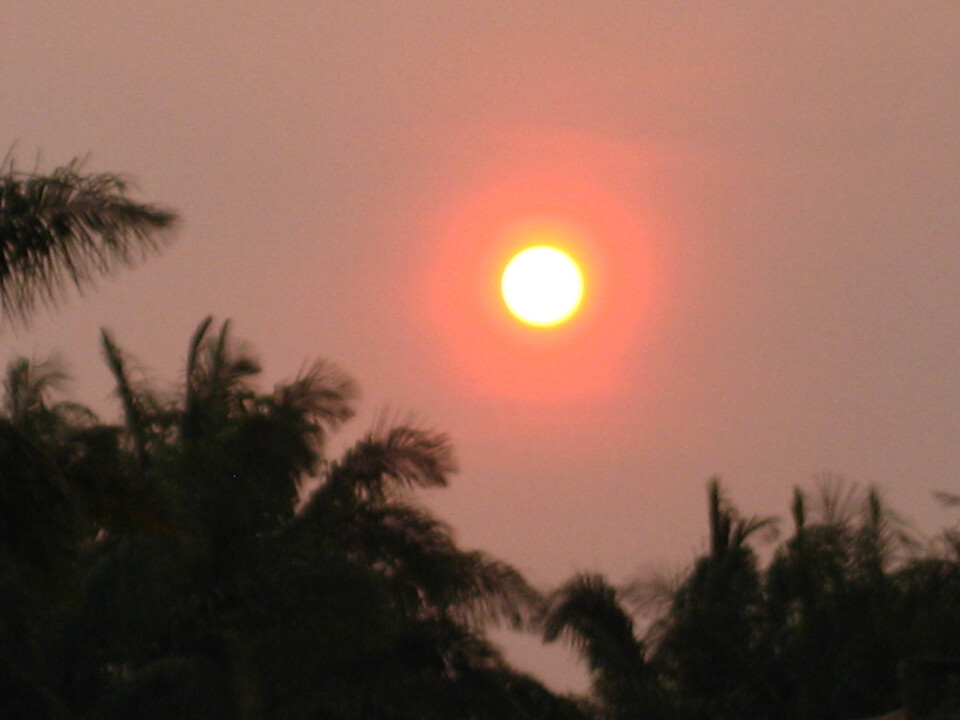
I think it's the fine dust in the air, obscuring the strength of our home star that allows us to see the Sun whole without blinding effects. At night, even with no cities around, I could only see a handful of stars.
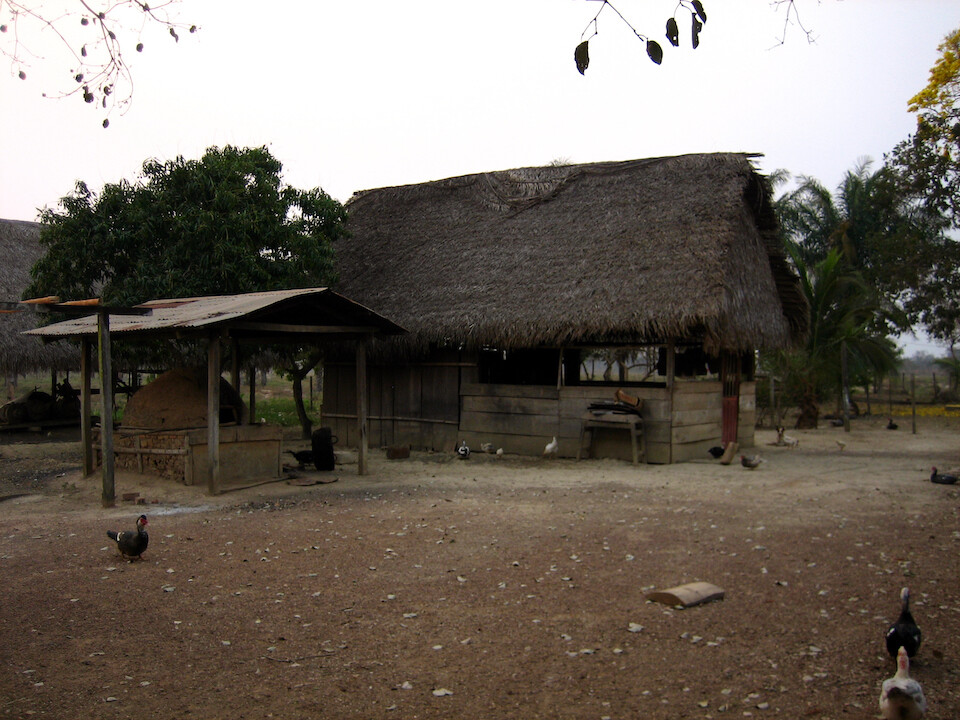
The kitchen on the farm with an outdoor oven.
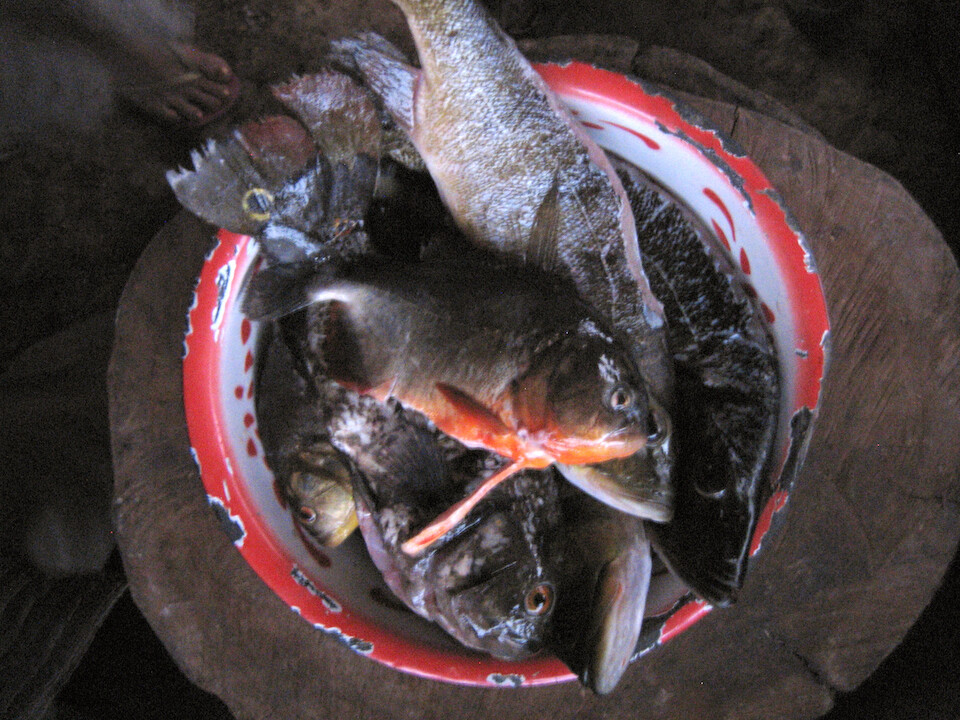
Fresh river fish for dinner and that one with the red stripe is a piranha.
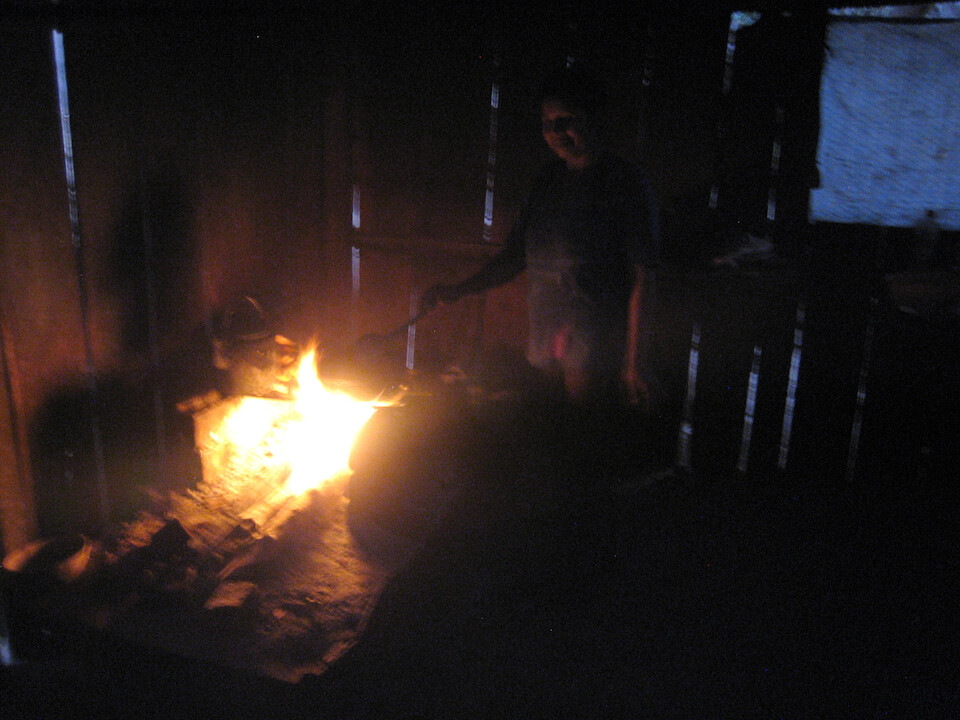
The wood fire stove in the kitchen.

Frying up some fresh fish.
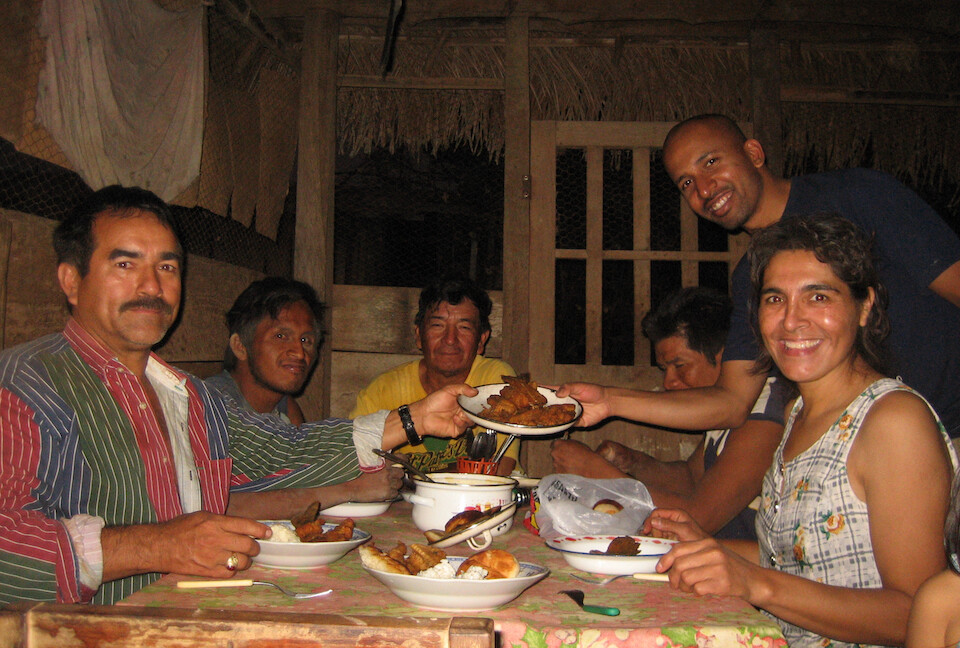
The owner and his wife sharing their dinner and their house with me for the evening.
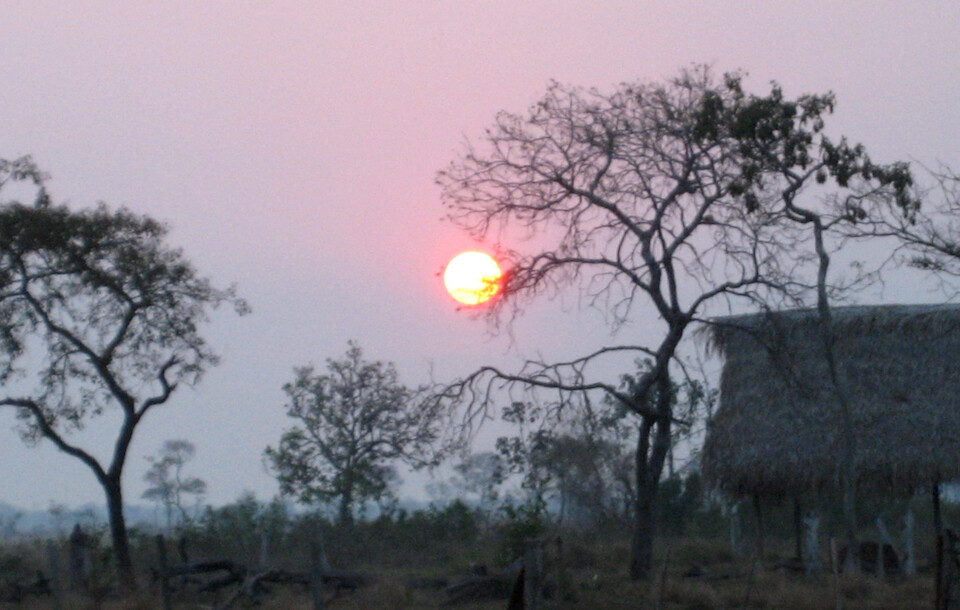
Sunrise the next morning with a similar effect on the Sun.
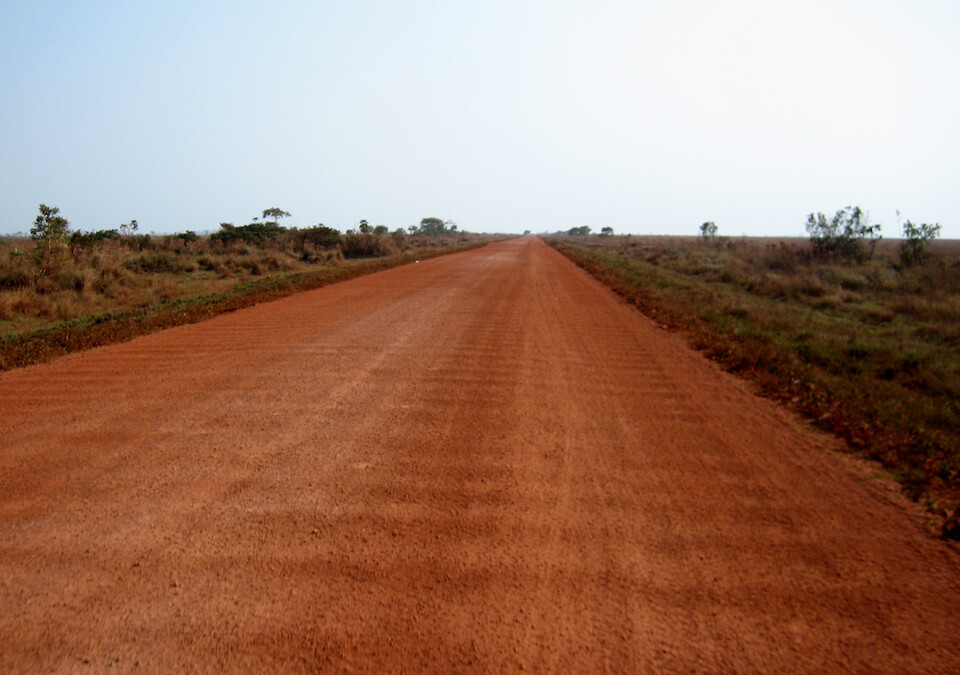
Back to more mind-numbing washboard road. If you're an expert dirt rider, you can fly across the tops of the bumps by going very fast, but I took the slow route and went up and over each undulation. I was more concerned about the health of my rear shock and the vibrations breaking off something on the bike.
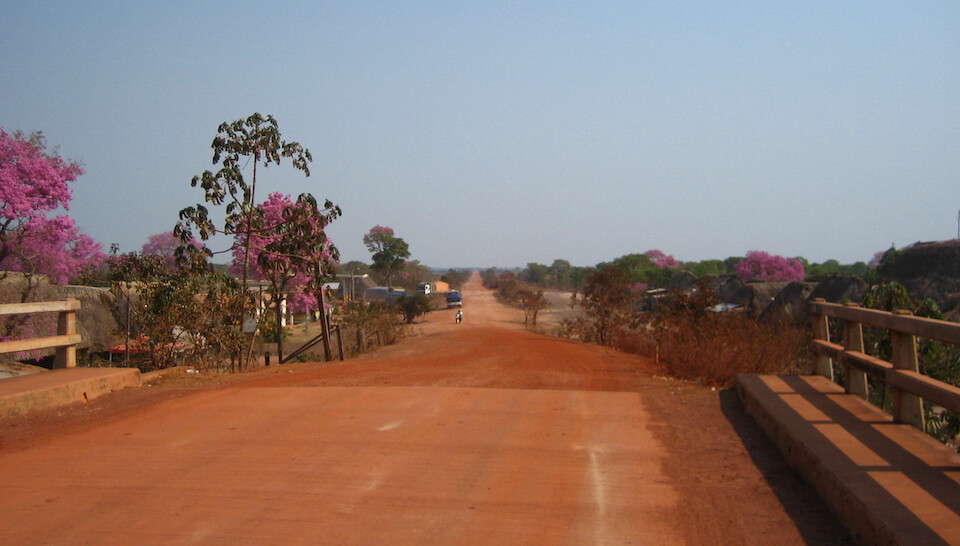
Riding across the bridge at Yata.
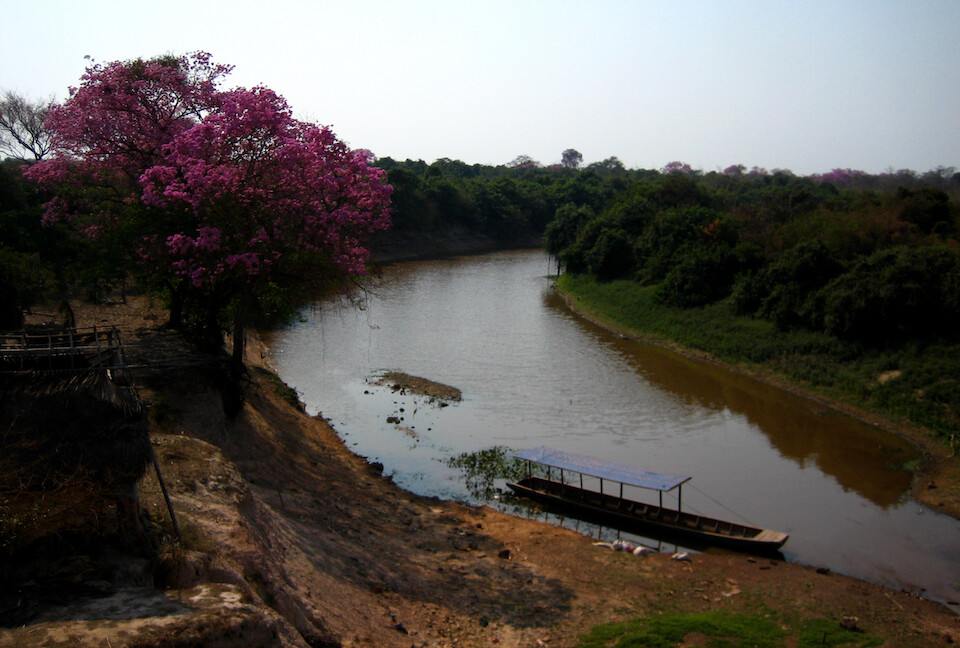
A river and colorful trees at Yata.
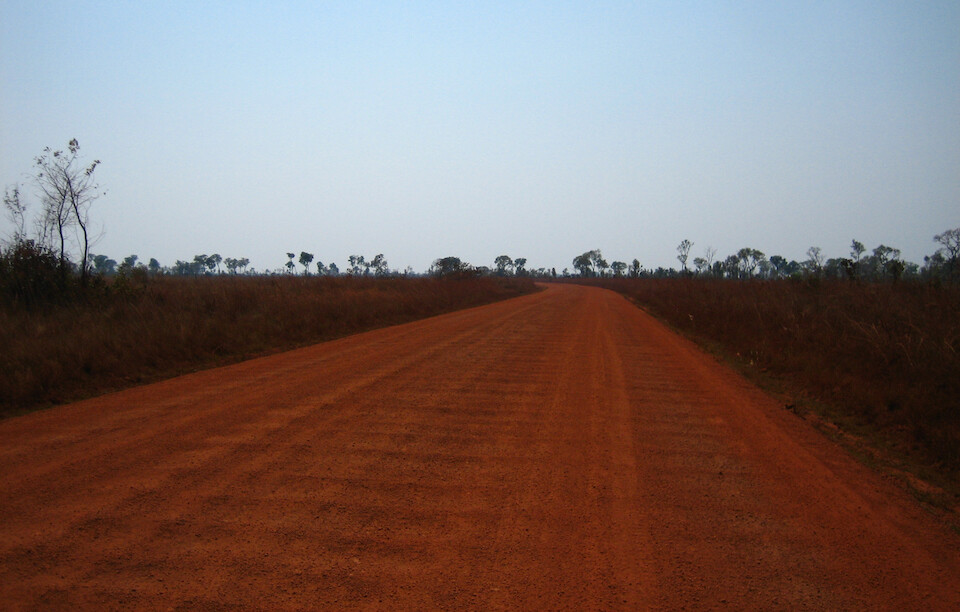
Looking forward to that curve up ahead. To keep my mind focused on the simple task of going in a straight line at slow speed, I had to listen to some audio books to keep my mind engaged.
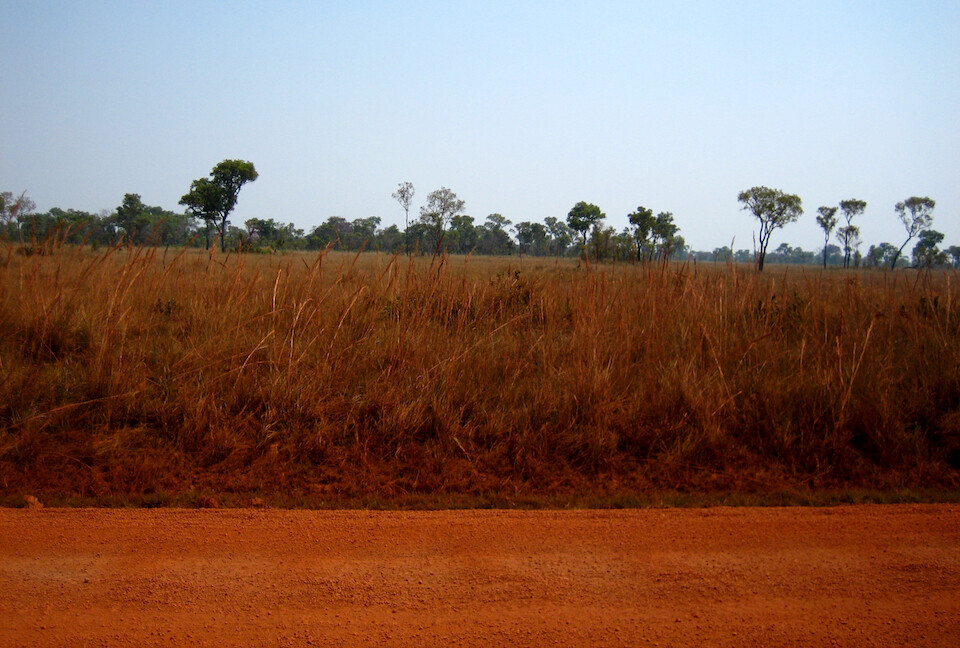
Scenery of the pampas (savanna) of northern Bolivia.
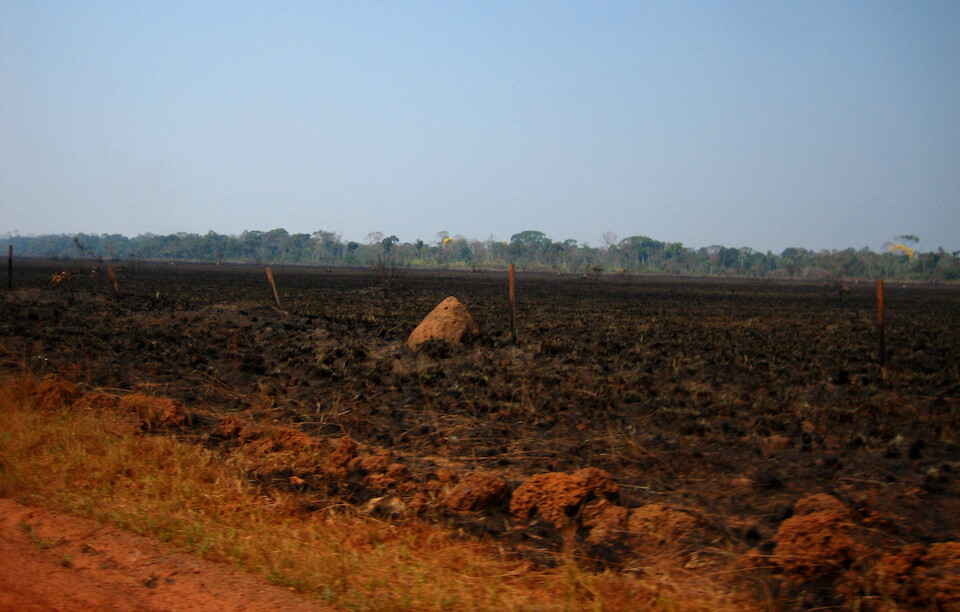
And a lot of it is burned, creating pastures for cattle. As a country develops, its demand for red meat increases.
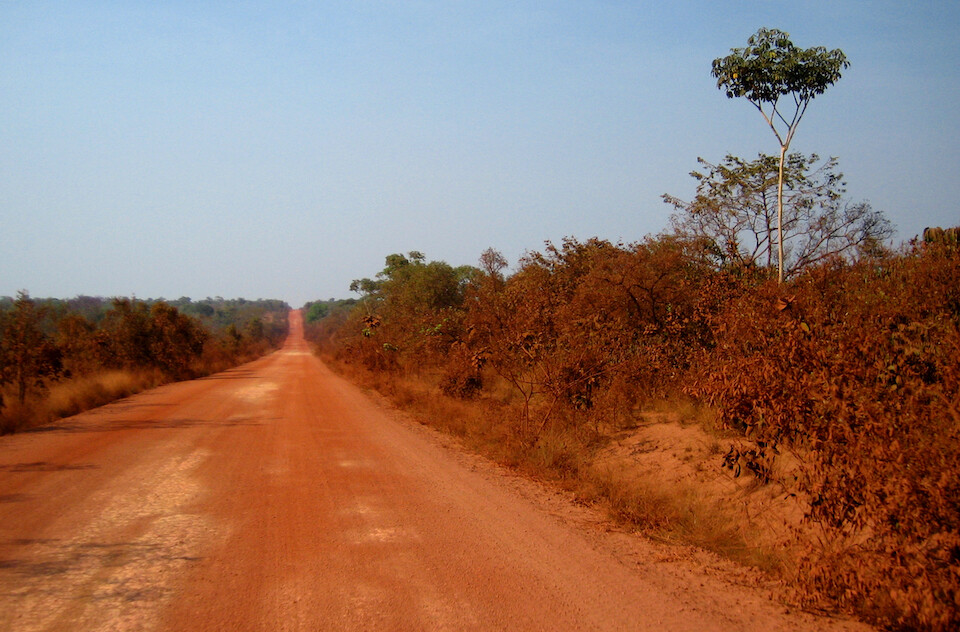
Look, there's a hill. Yeah! There were some stretches of respite from the washboard but after a short while, sudden intense vibrations would be felt signaling the return of the dreaded washboard.
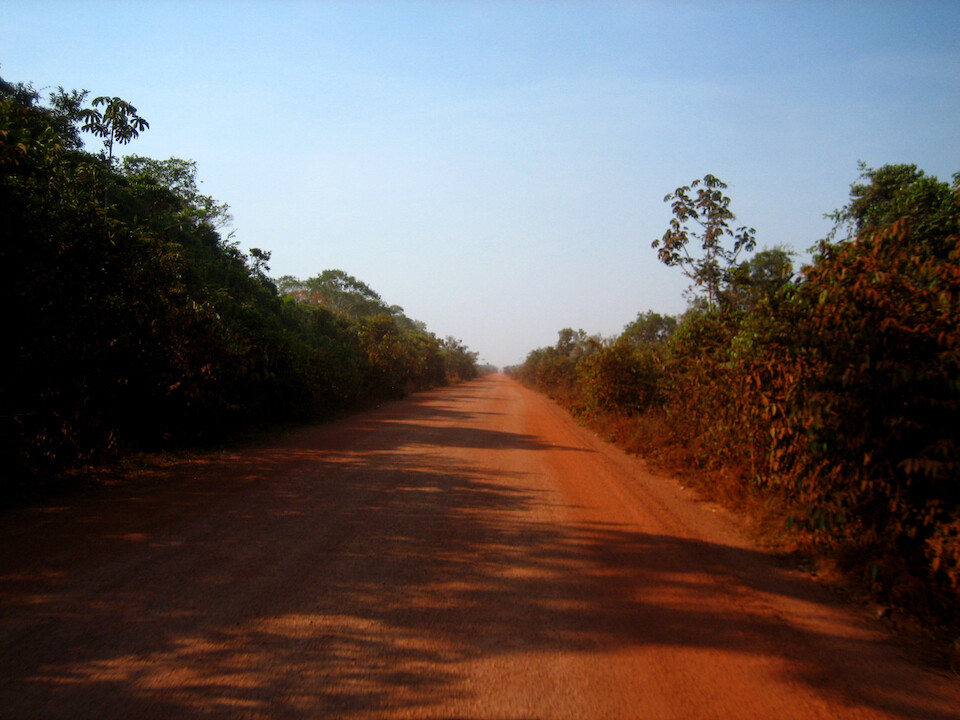
As the sun started to retreat, I kept an eye out for the next farm.
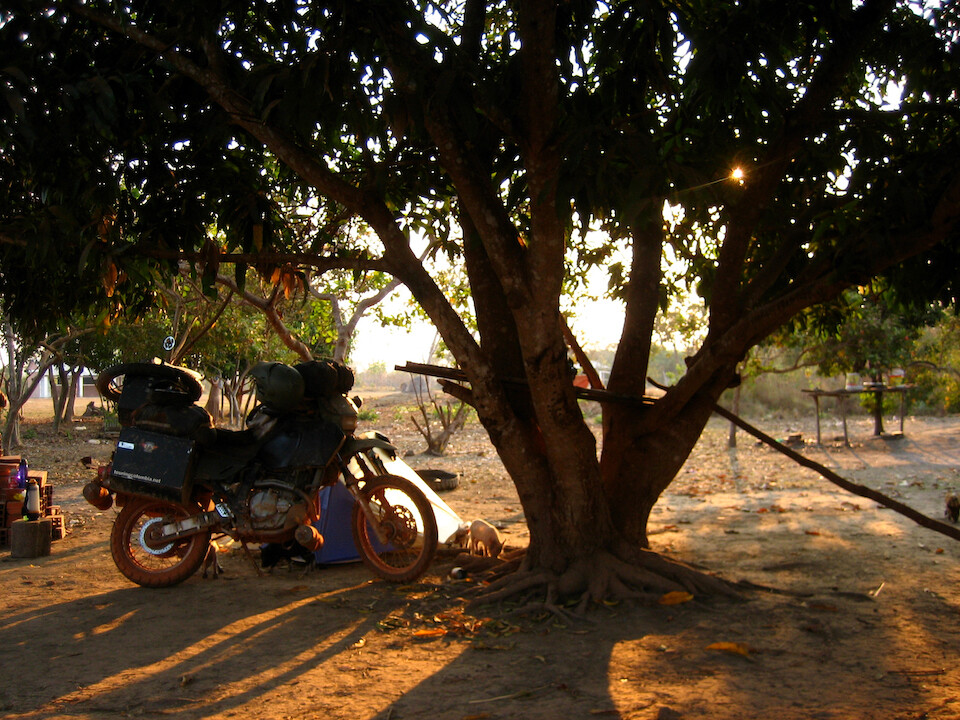
I came across a few clusters of houses in Mariposa and was told I could camp under this tree.
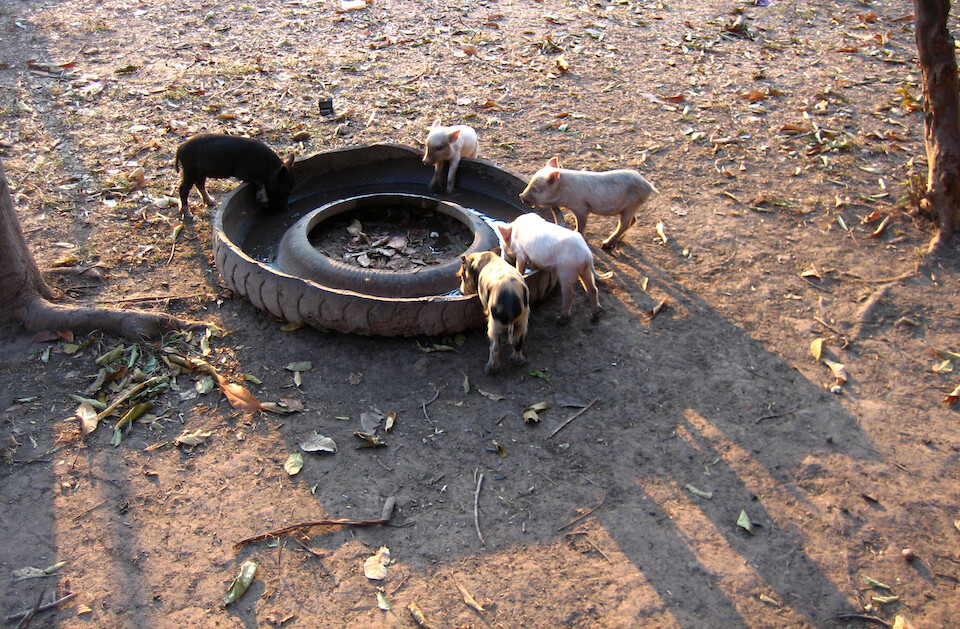
Cute little piglets having a drink from a cut tire-drinking trough.
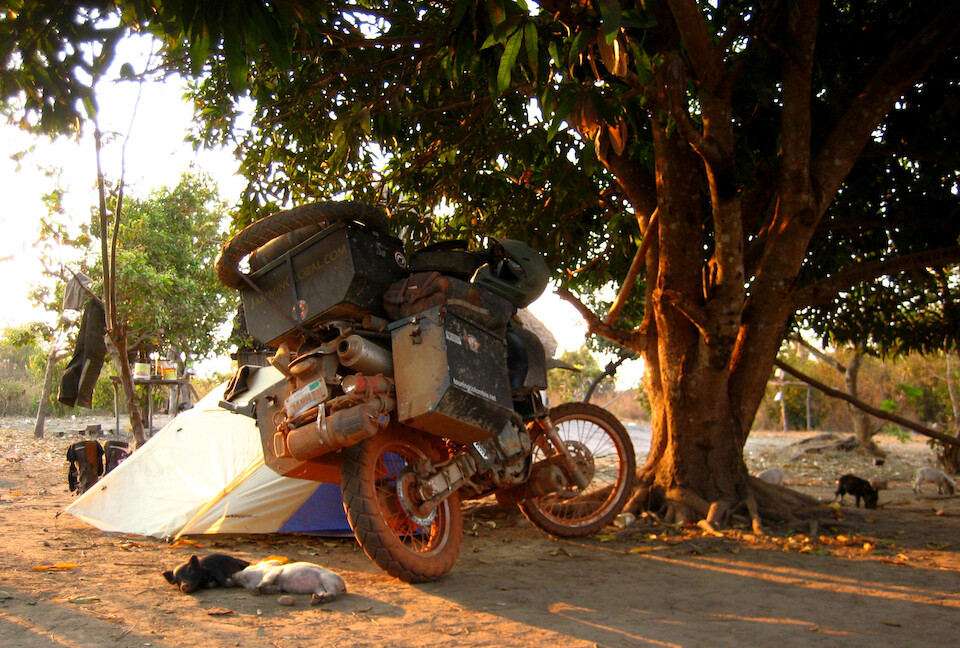
And after I setup camp, they reclaimed their territory and promptly went back to sleep.
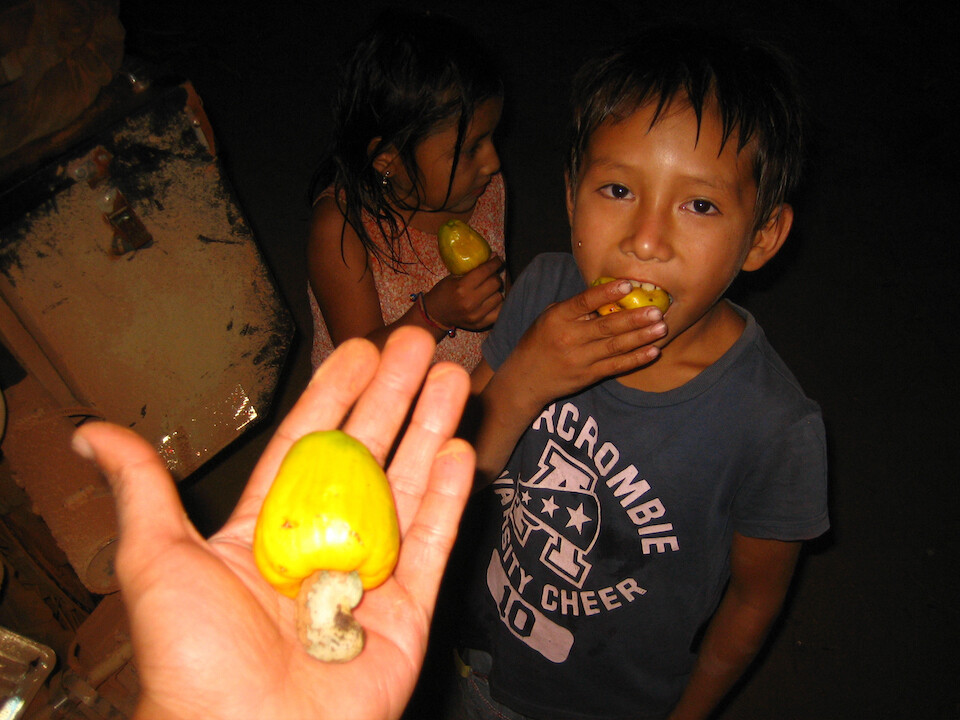
This little guy tagged along and gave me this Caju fruit, from the tree I was going to be sleeping under. I didn't know the cashew nut comes from a fruit like this. Looks pretty strange with the nut outside and a sweet fruit attached to one end. The juice from the caju fruit is very common in these parts of Bolivia and into Brazil.
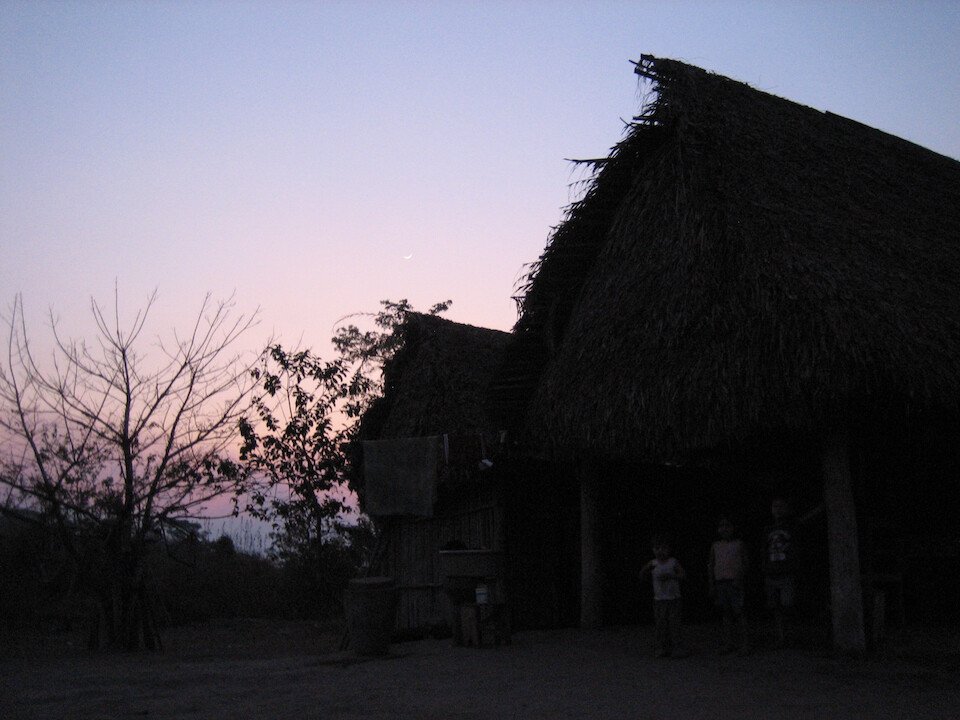
After I took an outdoor shower, one of the locals who told me I could camp here invited me over to his house for some dinner.
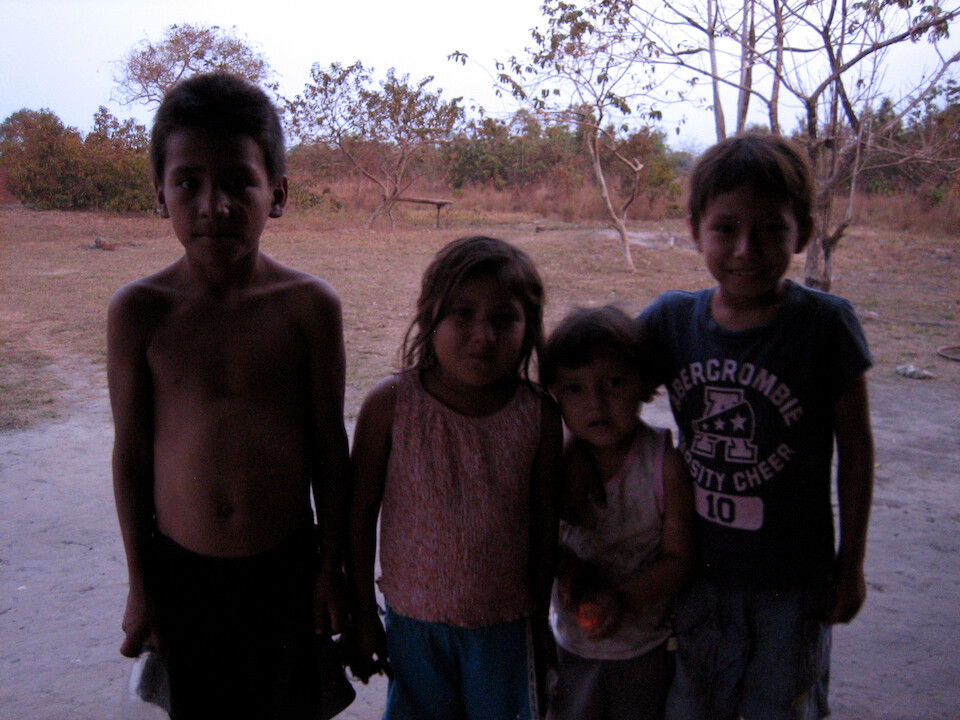
Some of his and the neighboring kids.
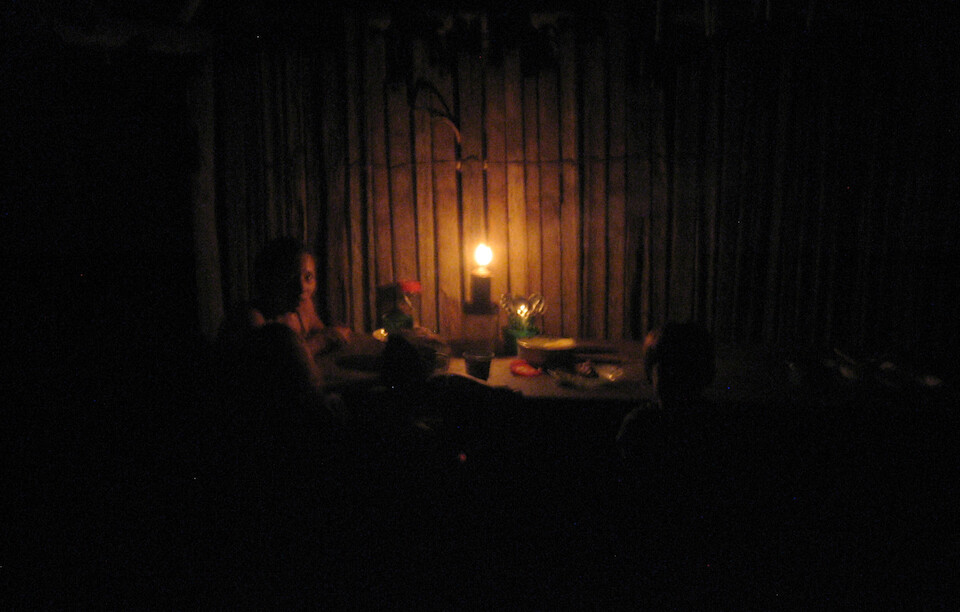
Dinner of some fried pork with boiled yuca and rice. There's no electricity in these rural parts and sunlight pretty much governs the day with farmers rising at dawn and trying to finish dinner before it gets dark with everyone turning in around 8 pm. I slept well these nights, get as much as 10 hours of sleep, recharging for the next day.
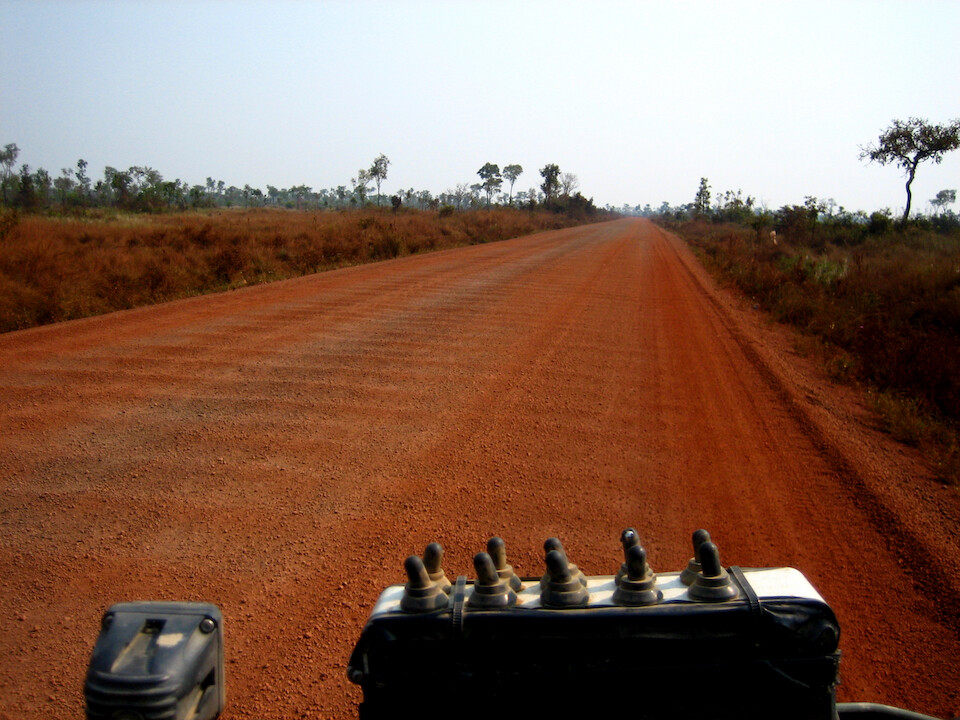
On the last stretch into Riberalta. Cars would pass me, flying at around 100 kph (62 mph) while I was chugging along at half that speed.
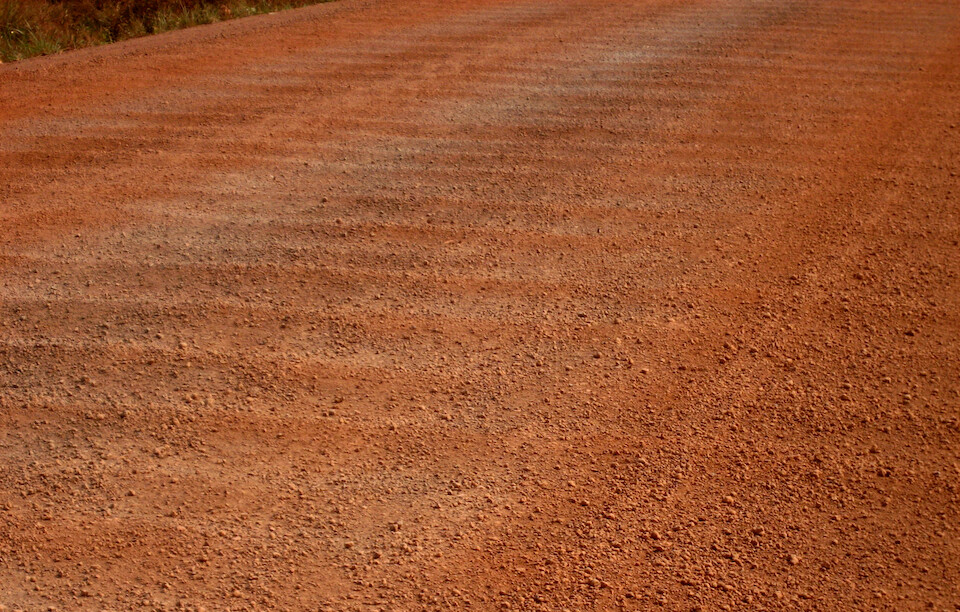
Road engineers have tried to analyze why washboard (corrugated) roads appear, but the cause of the phenomena still hasn't been figured out with prevention impossible. The only remedy is to regrade the road or go slower with lower tire pressures. I think I prefer sand riding over washboard.
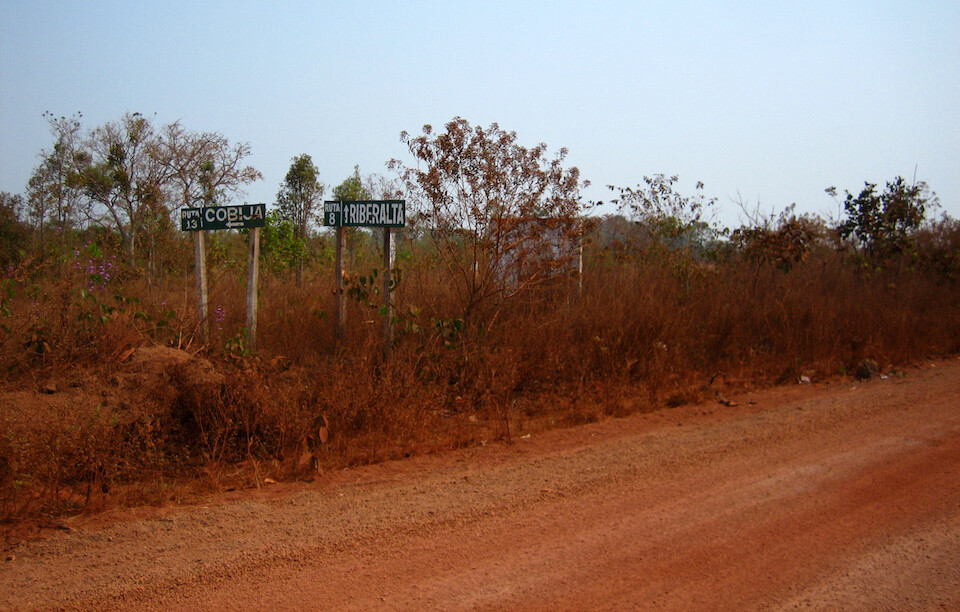
Finally a road sign to Riberalta. Good to know I was on the right road (thanks to the trusty GPS).
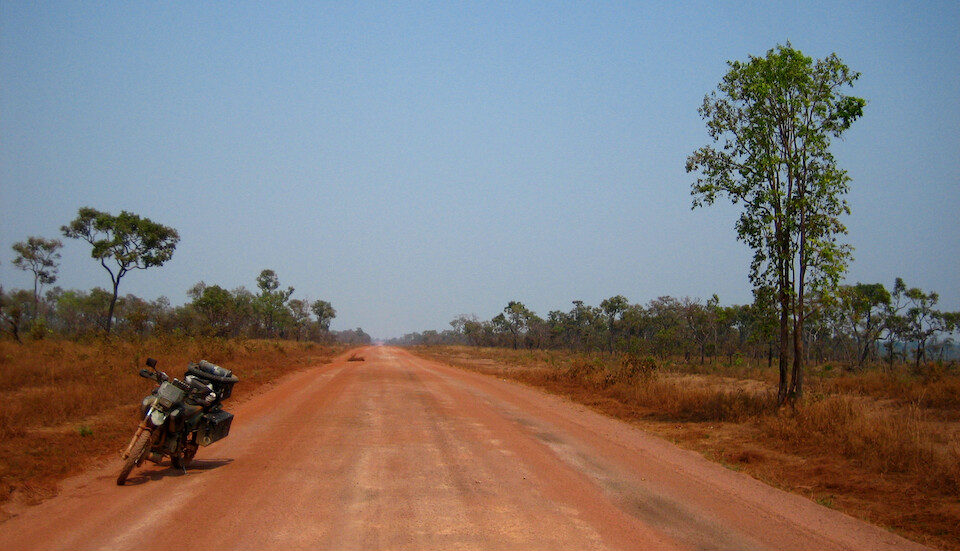
The road got better as I neared Riberalta.
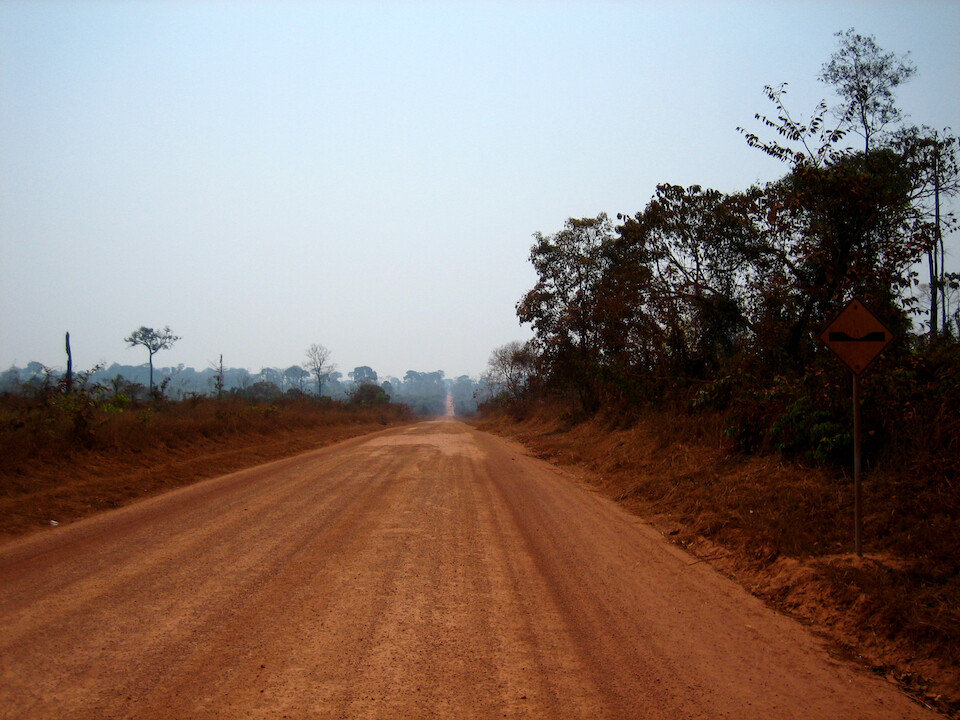
You're going to warn me about a dip after all that I've been through? :p Civilization must be close.
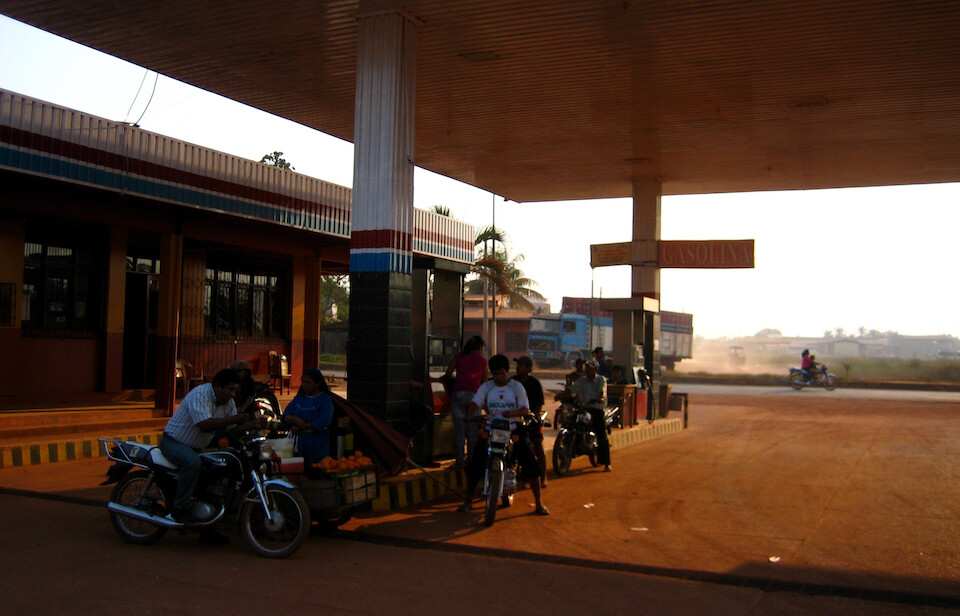
Coming across the first proper gas station since Rurre in Riberalta. You can find gasoline in the small towns along the way for about 5 Bol/lt.
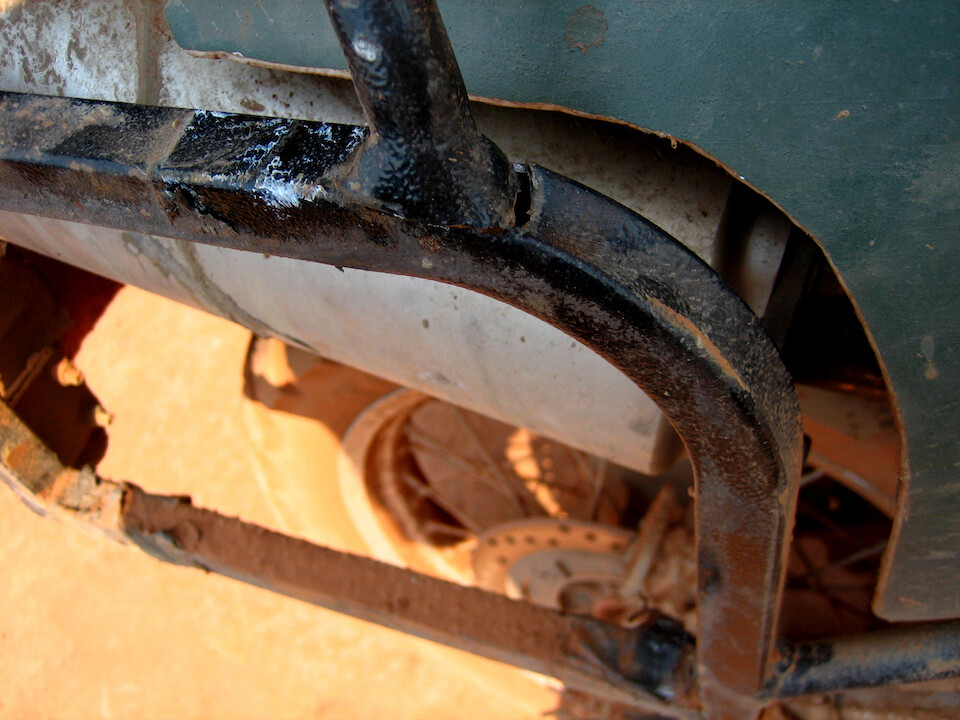
The vibrations of the washboard took a toll on sanDRina and I had the right pannier weighed down a lot so wasn't surprised to find this crack in the pannier frame.
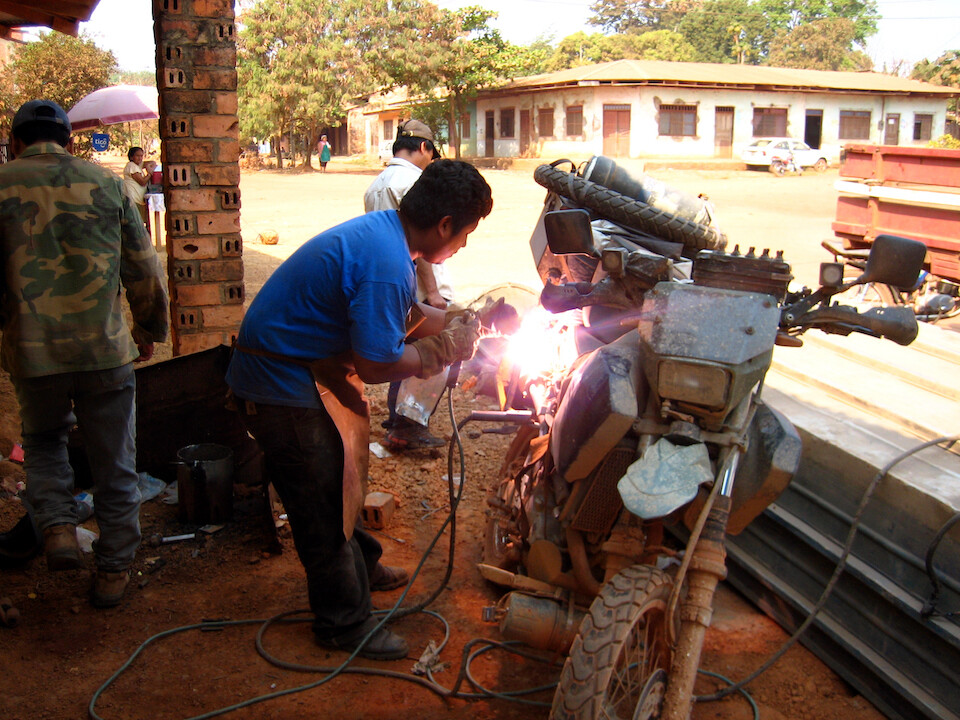
Welder in Riberalta promptly working on the bike.
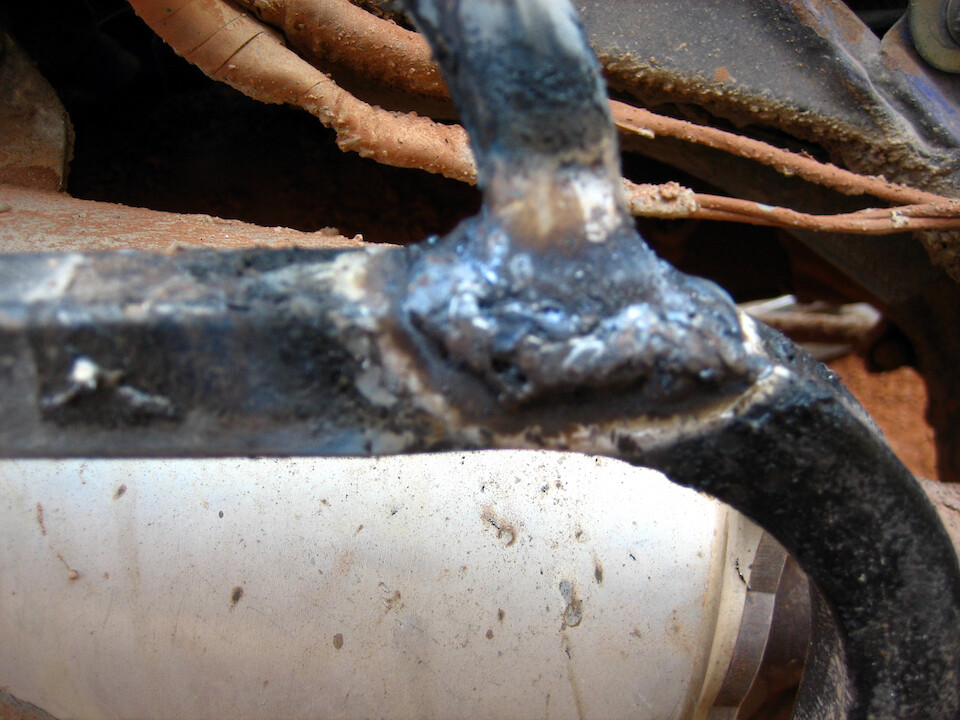
Big, fat weld for 10 Bolivianos.
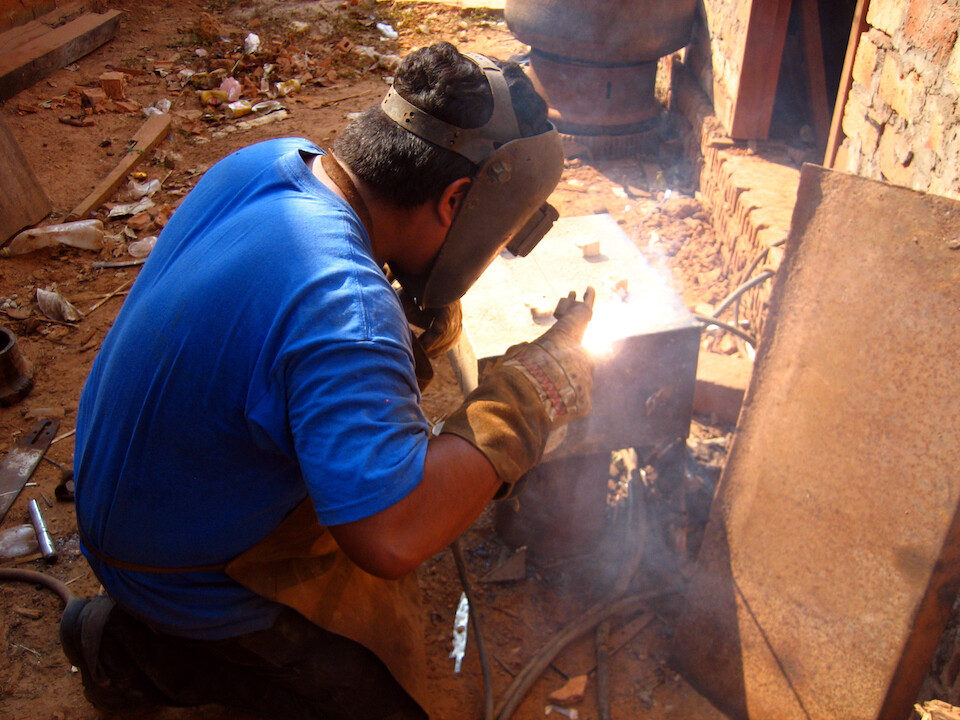
The accident in the fog had cracked a joint in my left pannier and he said he could also do aluminum welding.
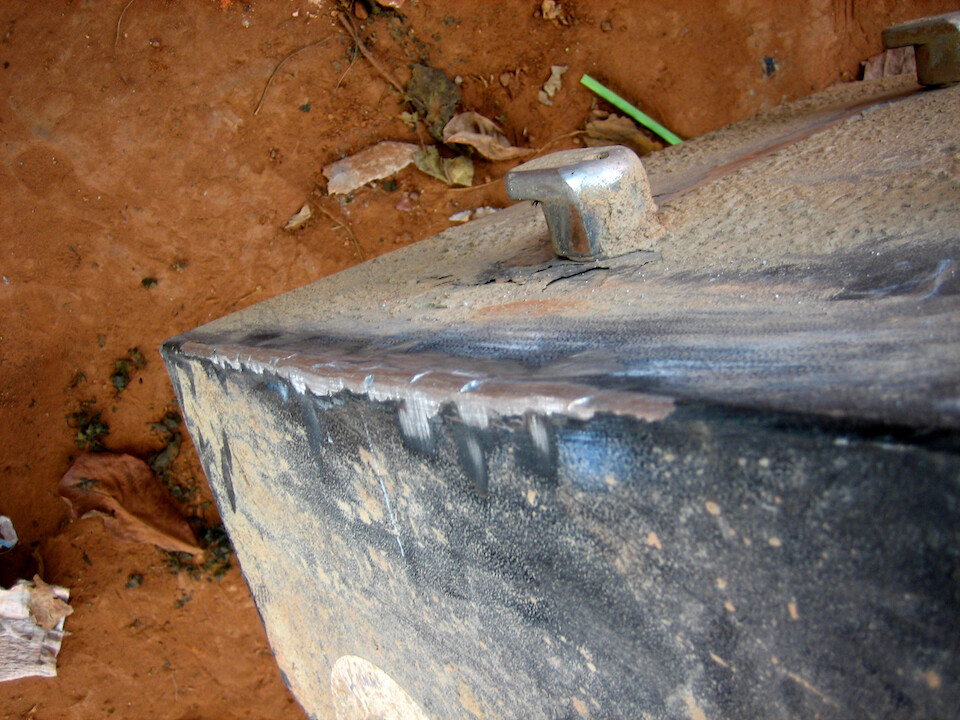
A fine job of joining the split walls.
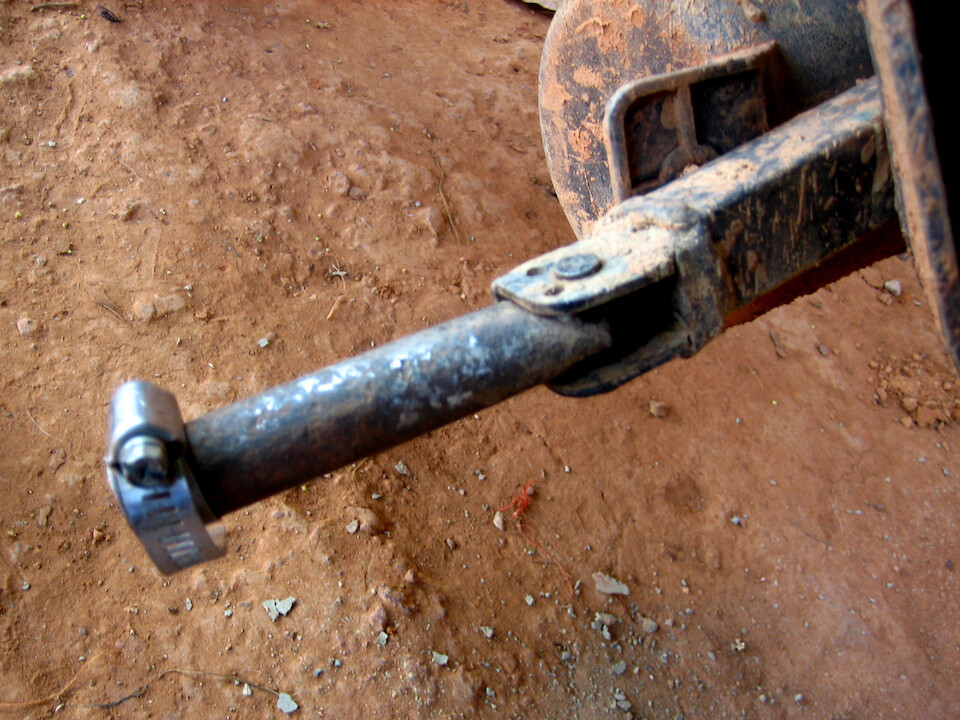
He also made me a new highway foot peg as the old one got sacrificed in the accident, acting as a frame slider and protecting any damage to the engine.
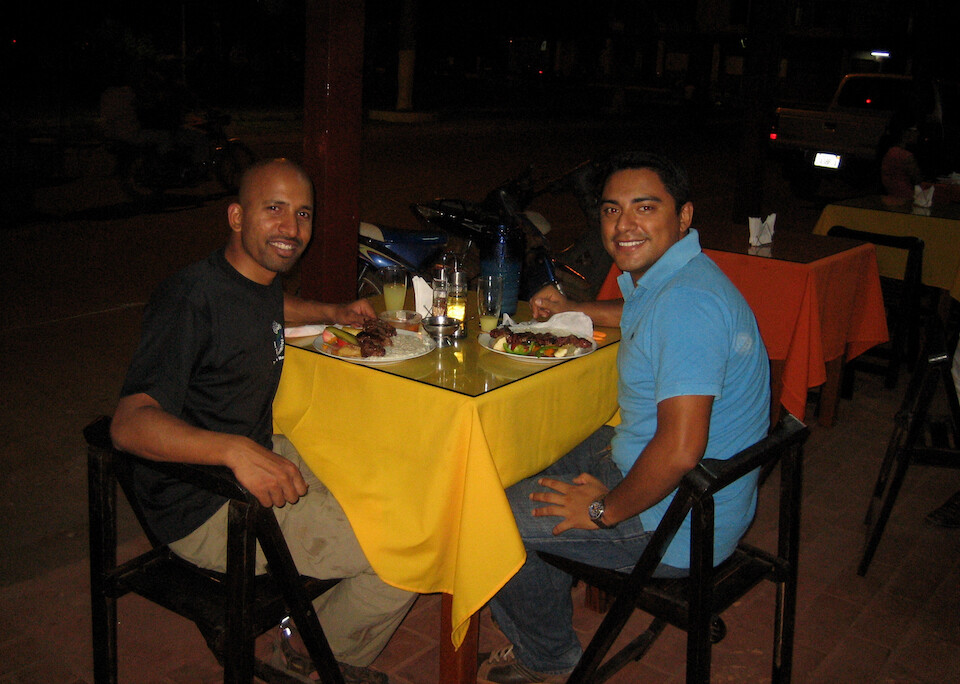
Having dinner with Rodrigo from CouchSurfing. He's from Santa Cruz but has been working here for a few years as he's involved in transporting the lucrative Brazil nut, which is gathered from wild trees as it can't be grown in plantations.
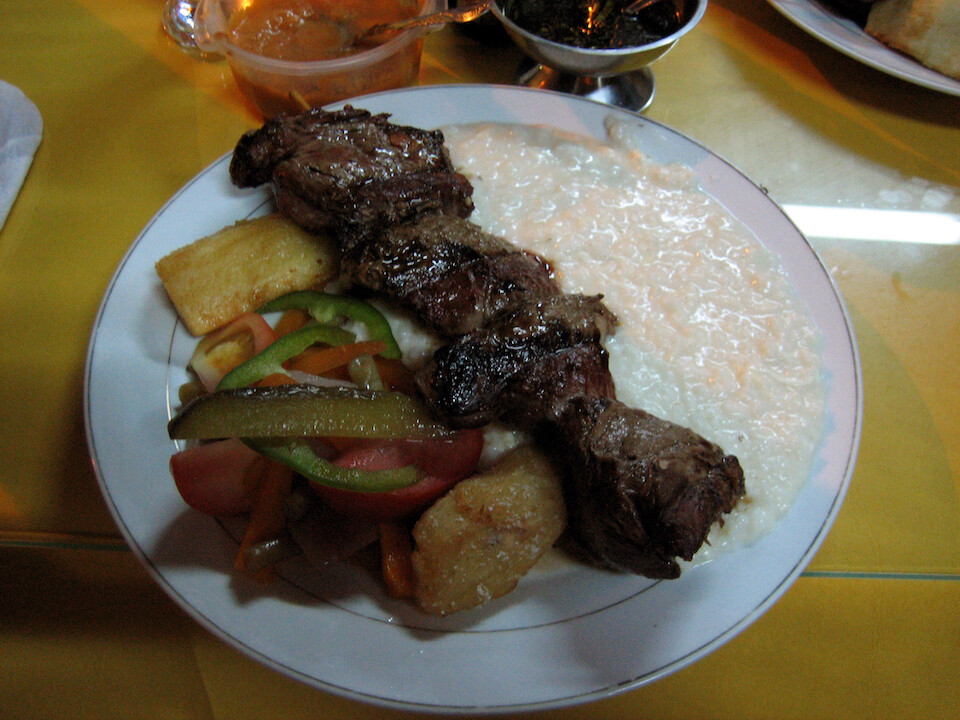
Dinner of some grilled beef with veggies and a soupy rice.
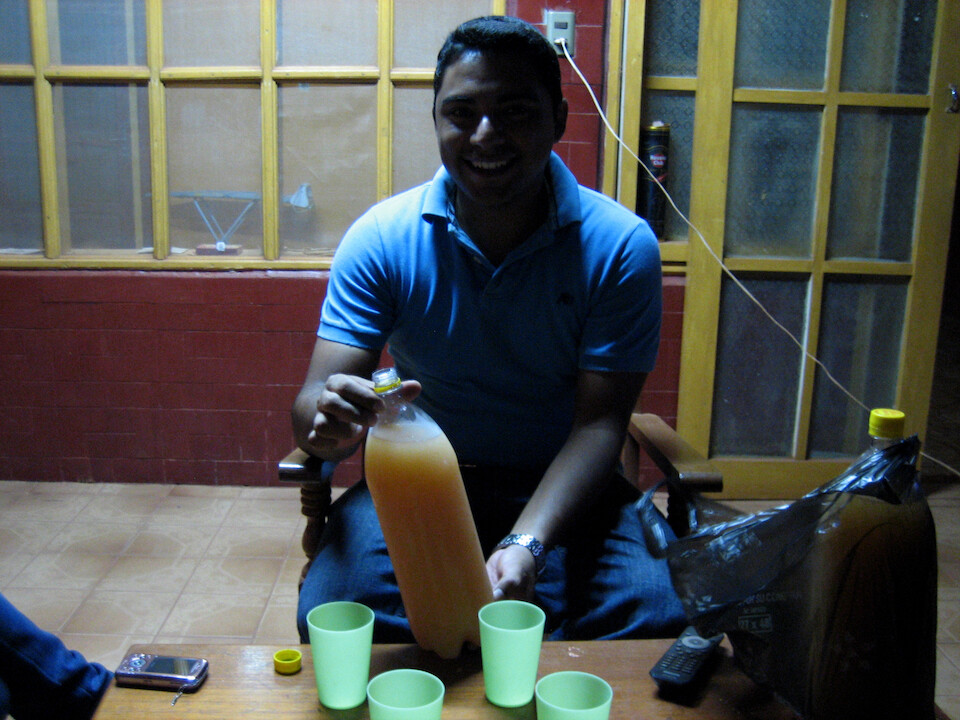
That evening, Rodrigo invited some friends over and we polished off two bottles of a local alcohol made from the Caju fruit.
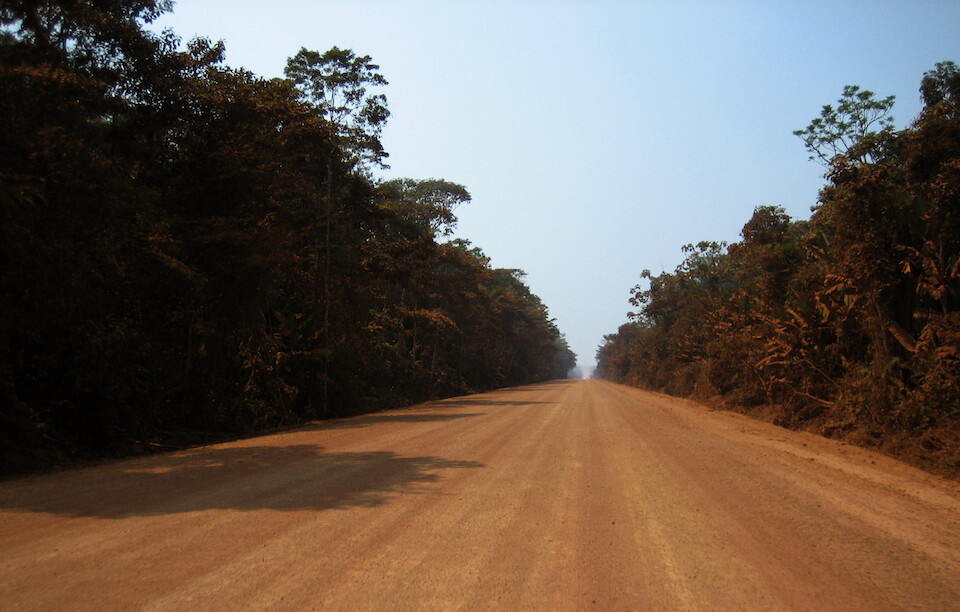
The final stretch of the road in Bolivia, nearing the border at Guayaramerin.
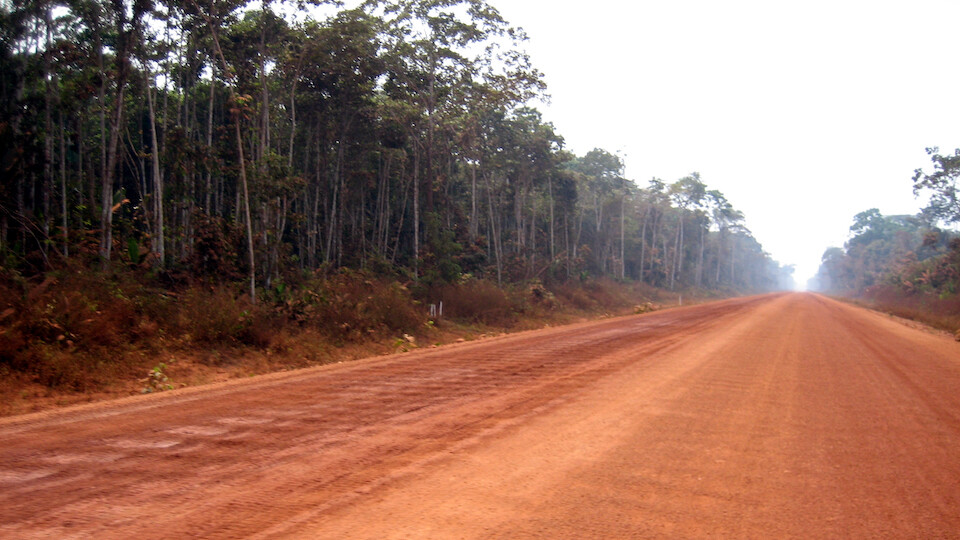
More washboard, but construction was taking place to pave the 96 kms (60 mi) stretch from Guayara to Riberalta.
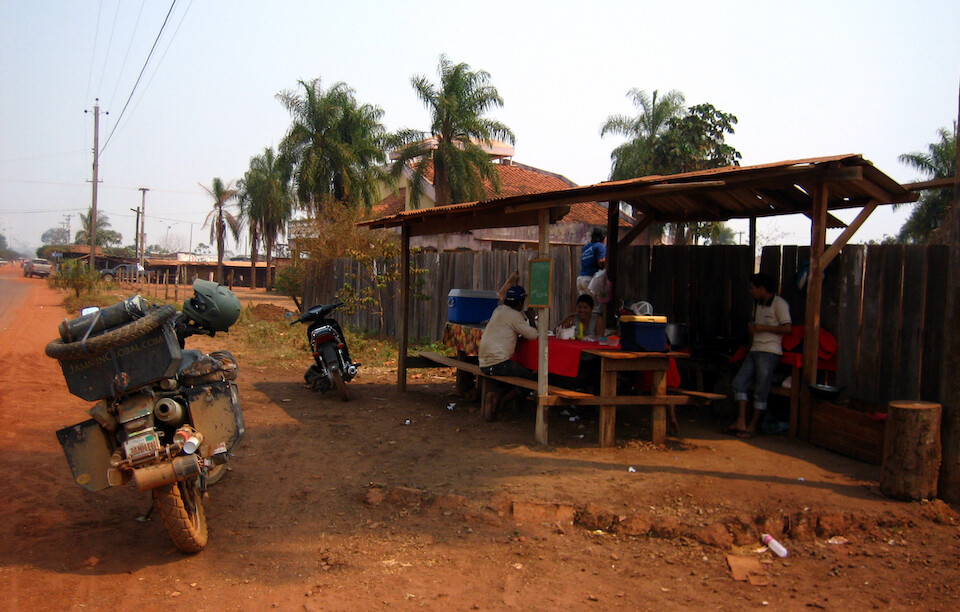
Having one last cheap meal in Bolivia before crossing into Brazil.
I didn't get to see what I really came for in Bolivia, the Salar de Uyuni but I had a wonderful time here, nonetheless. The people were warm and the food was good. I was shown lots of generosity from mechanics who helped me out with sanDRina and farmers who let me stay with them. It was a rough journey north of La Paz, but the experience will linger.
Next: Brazil, Part 1: The start of the TransAmazonica
Previous: Bolivia, Part 3: Yungas and mud riding